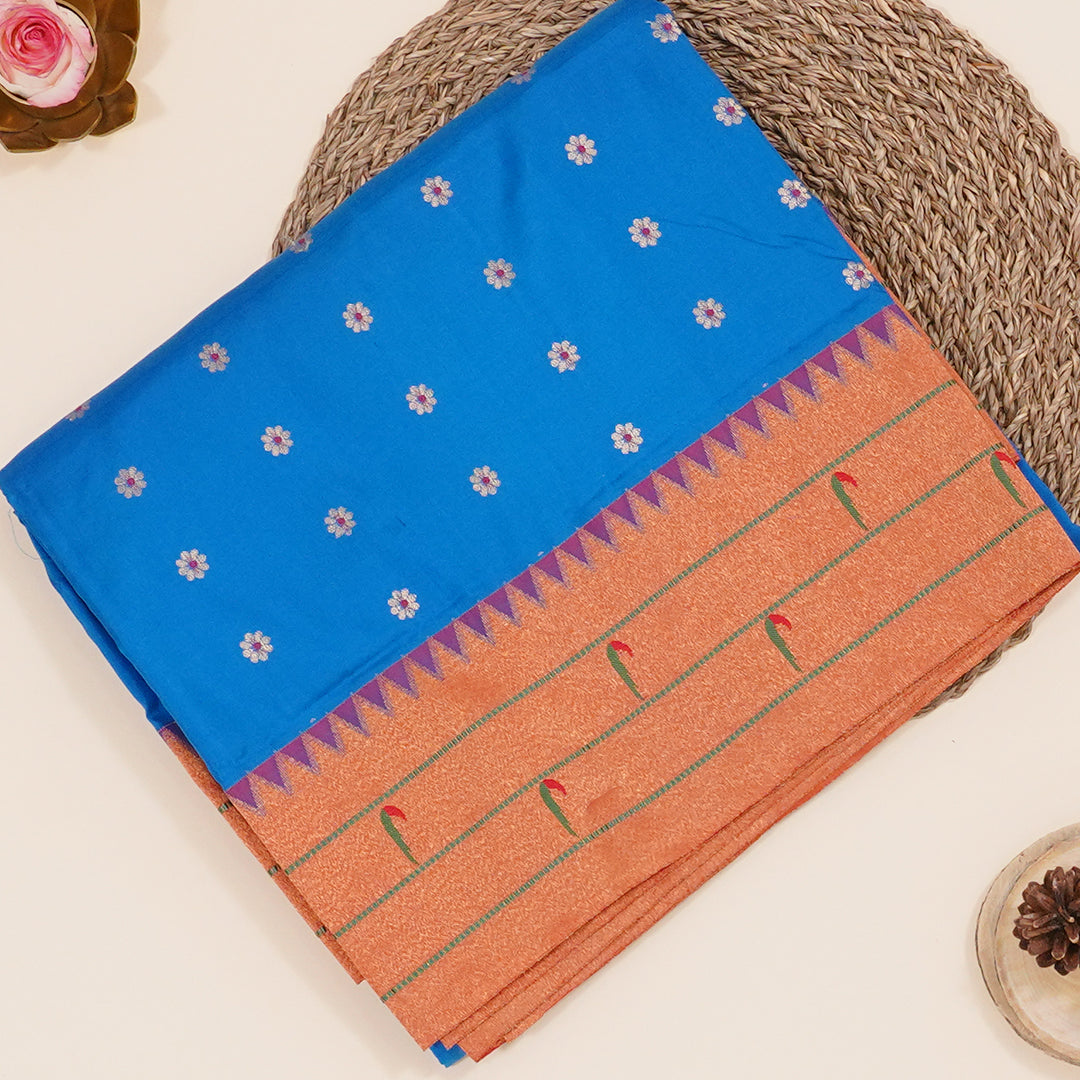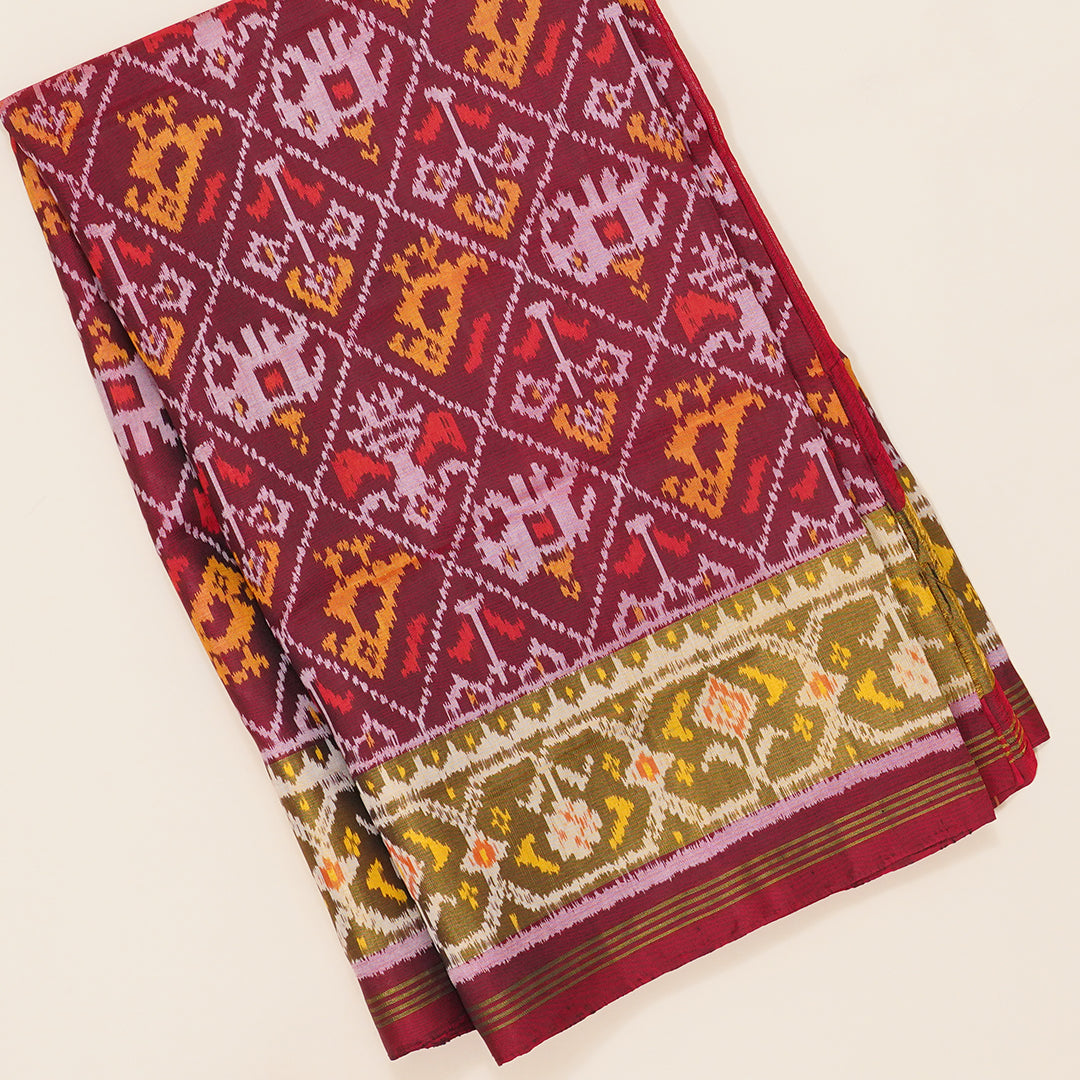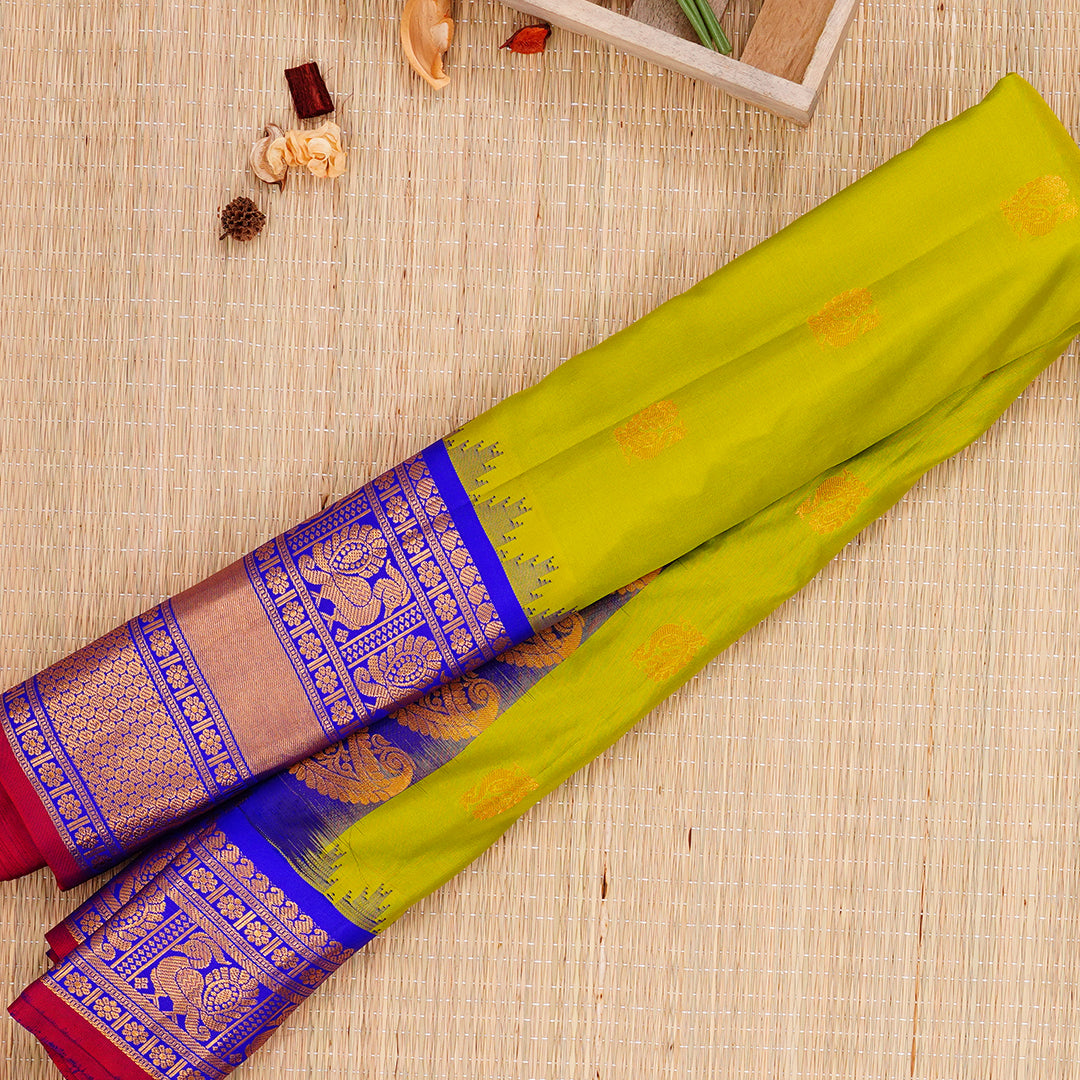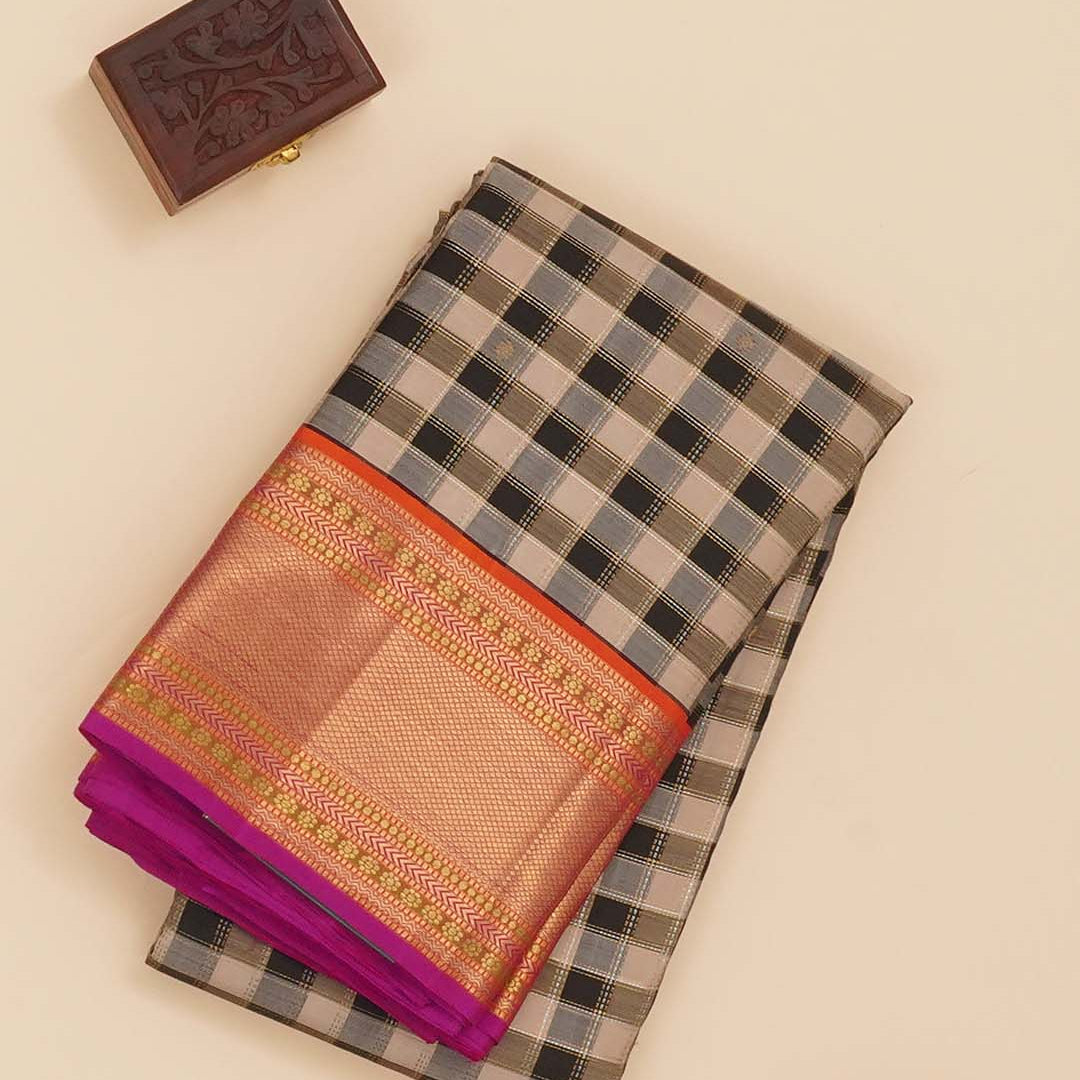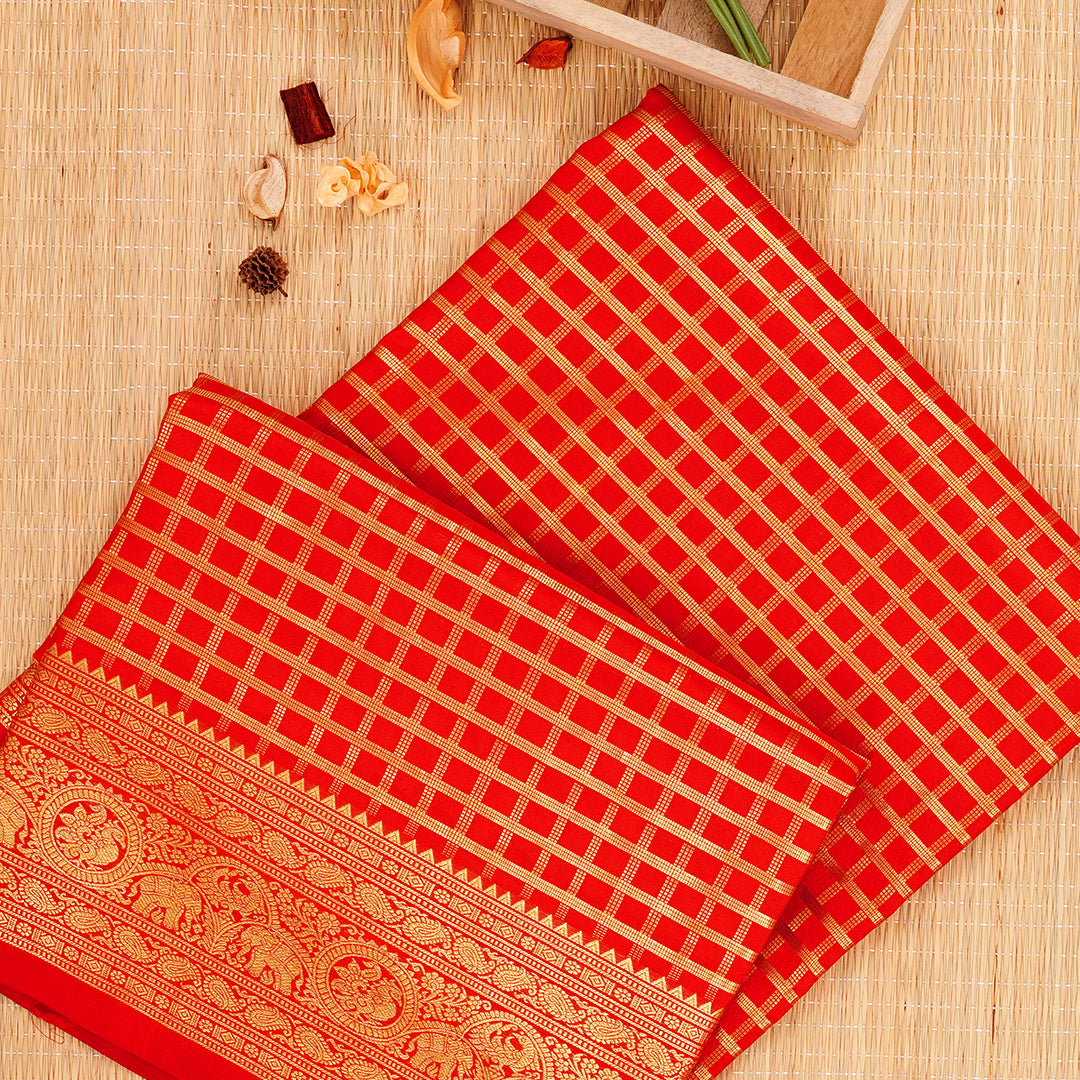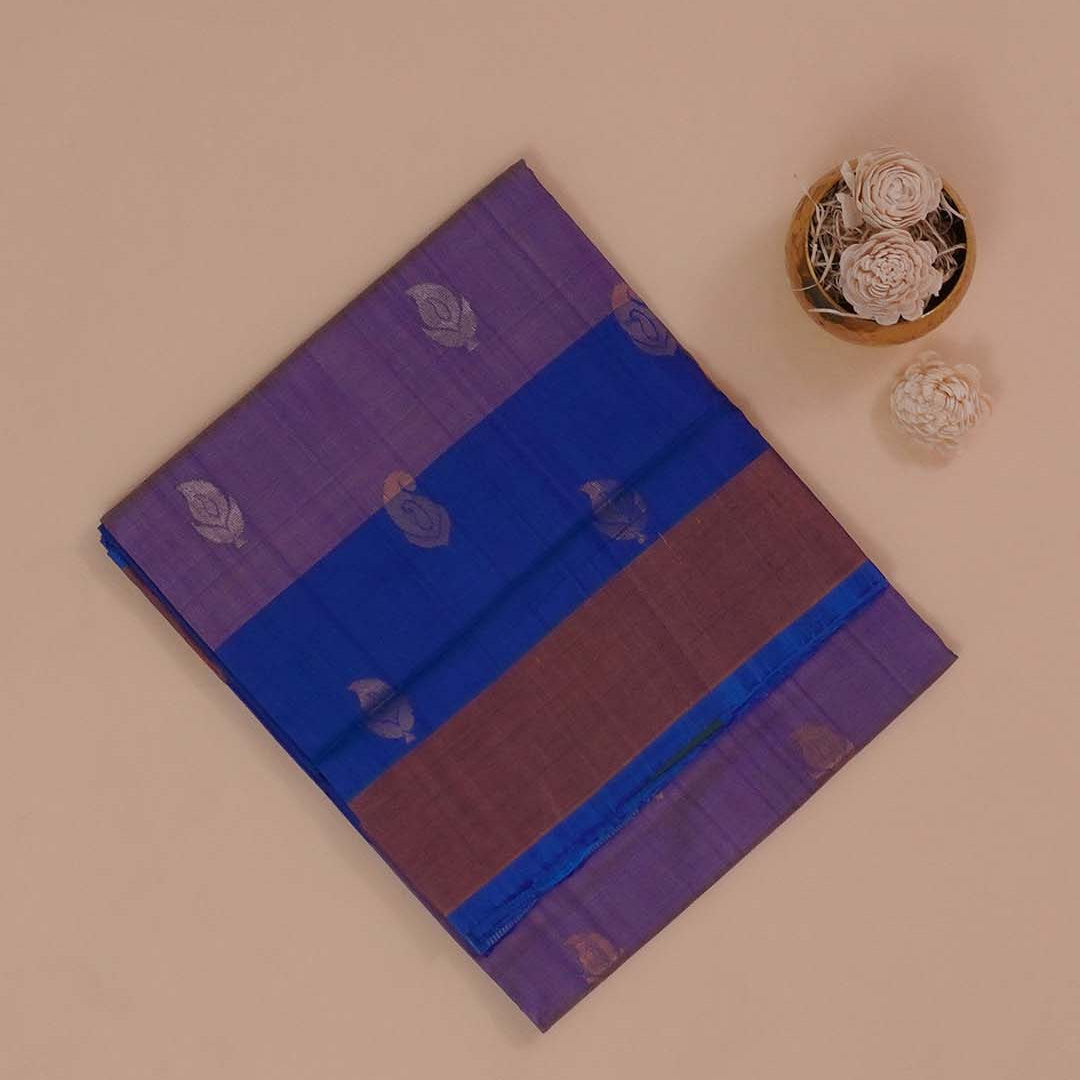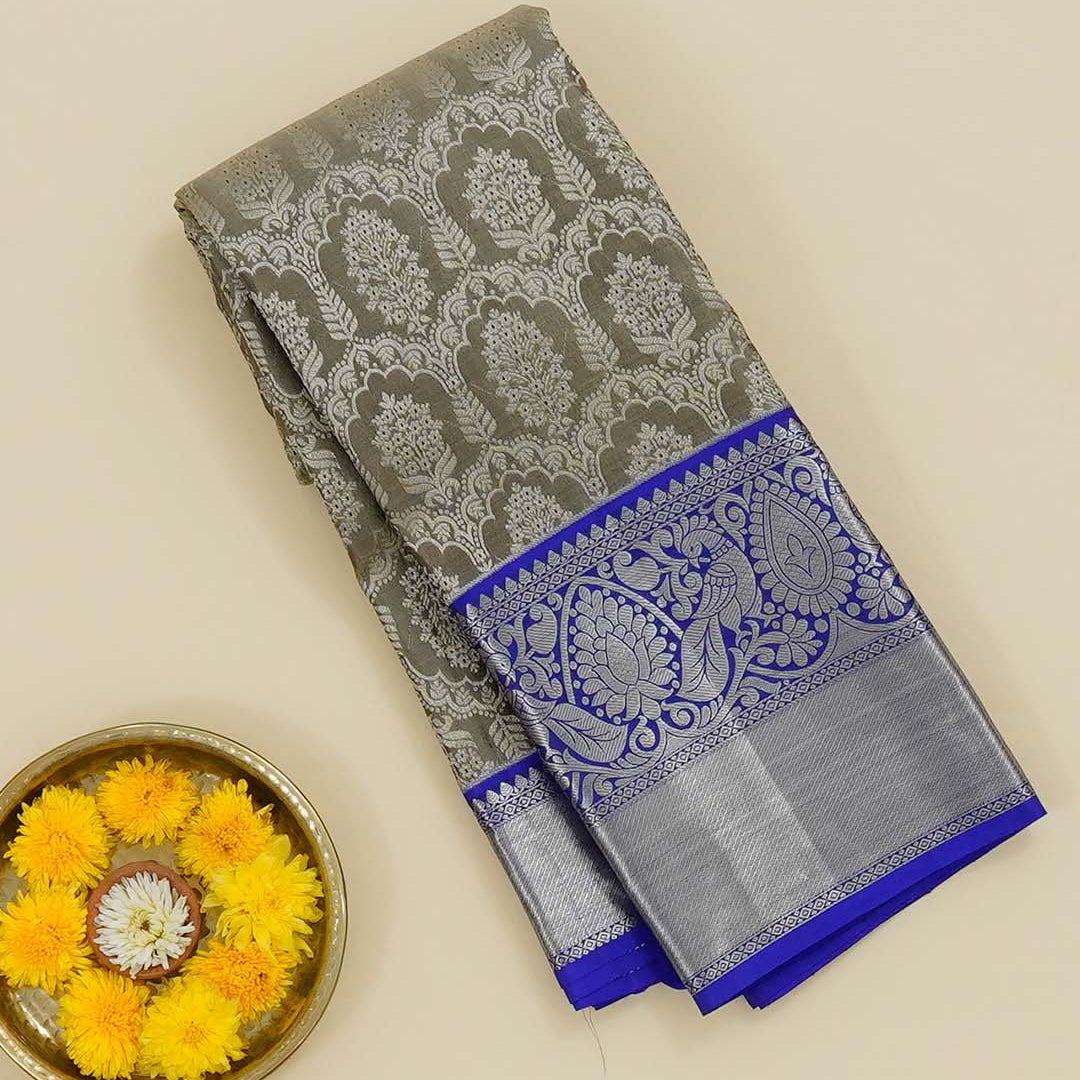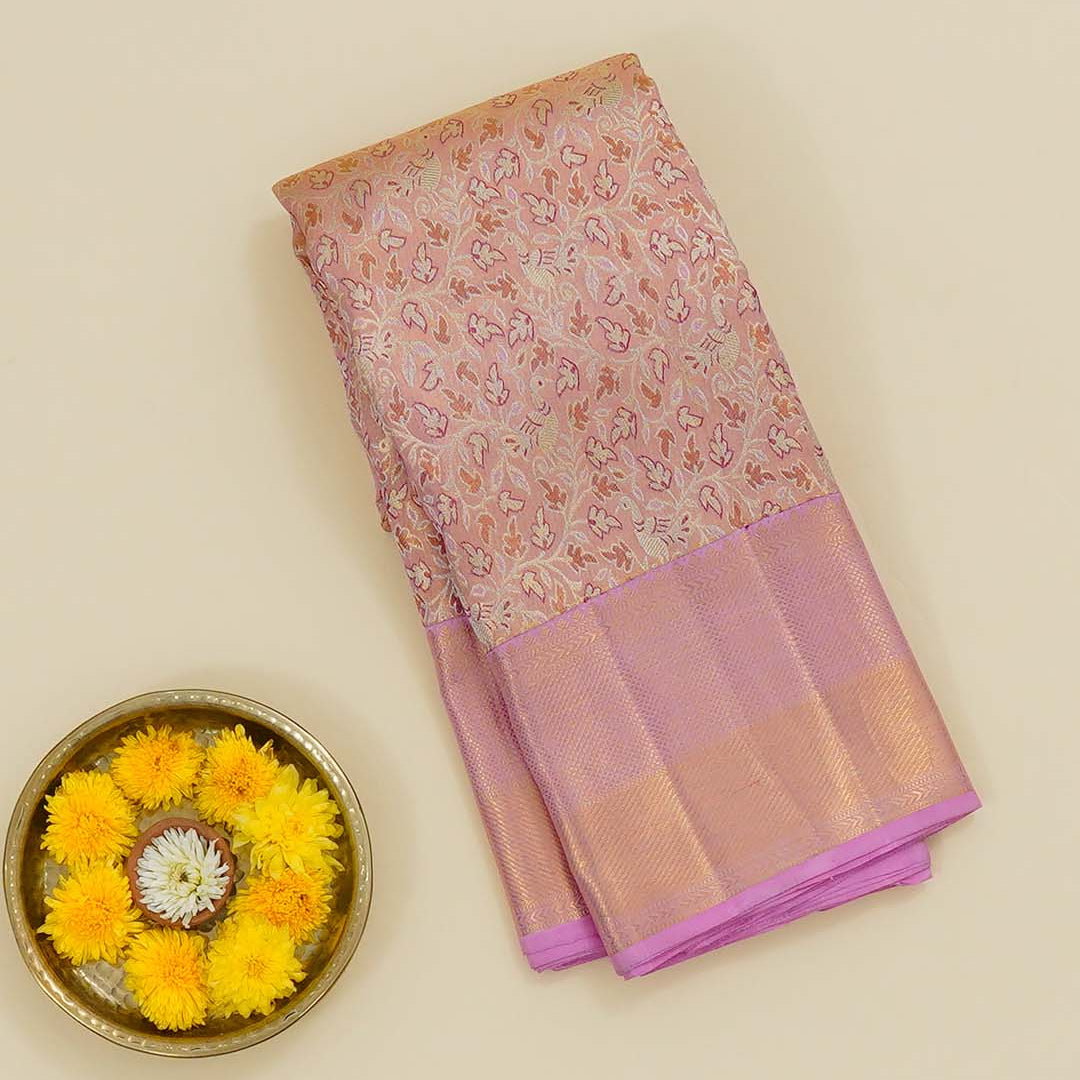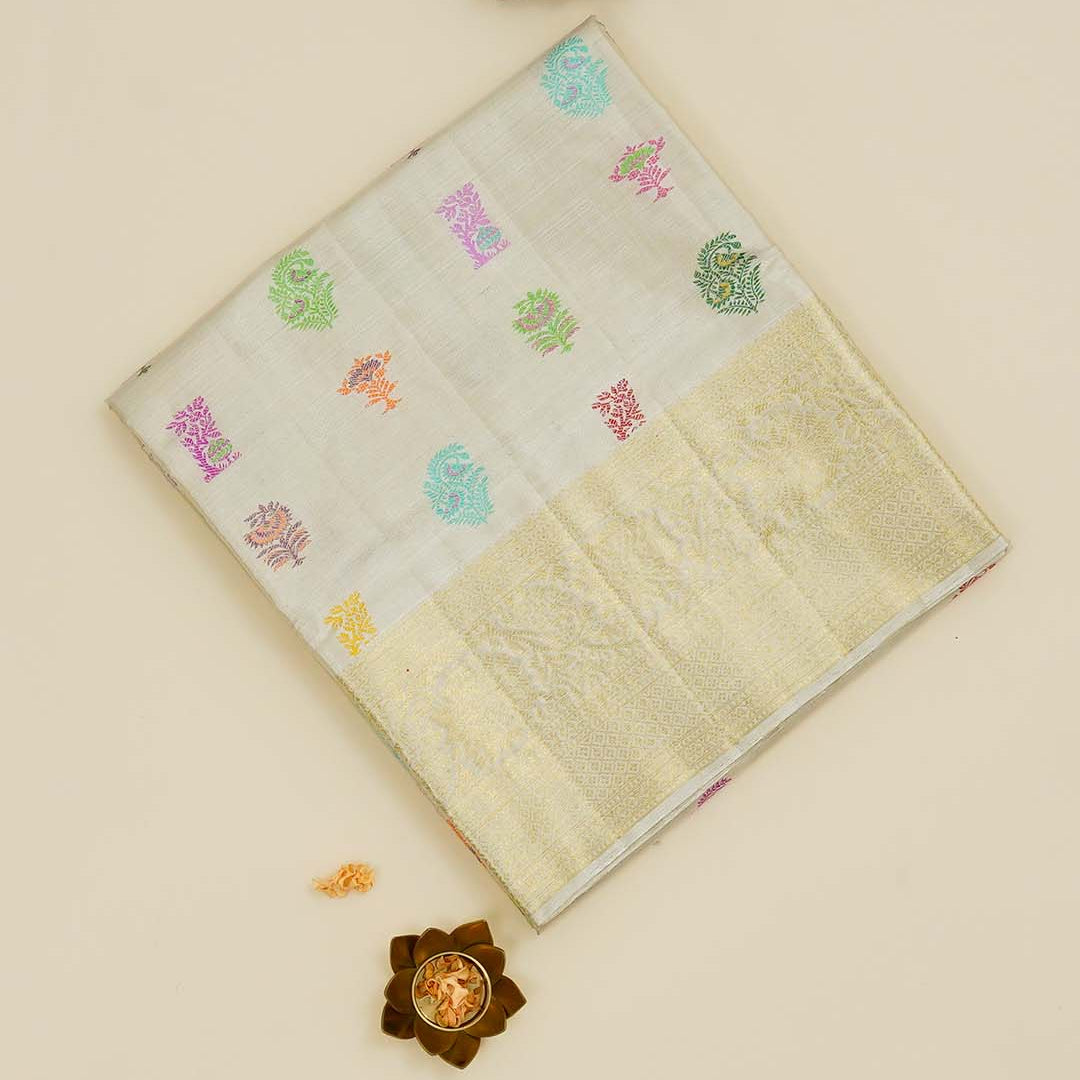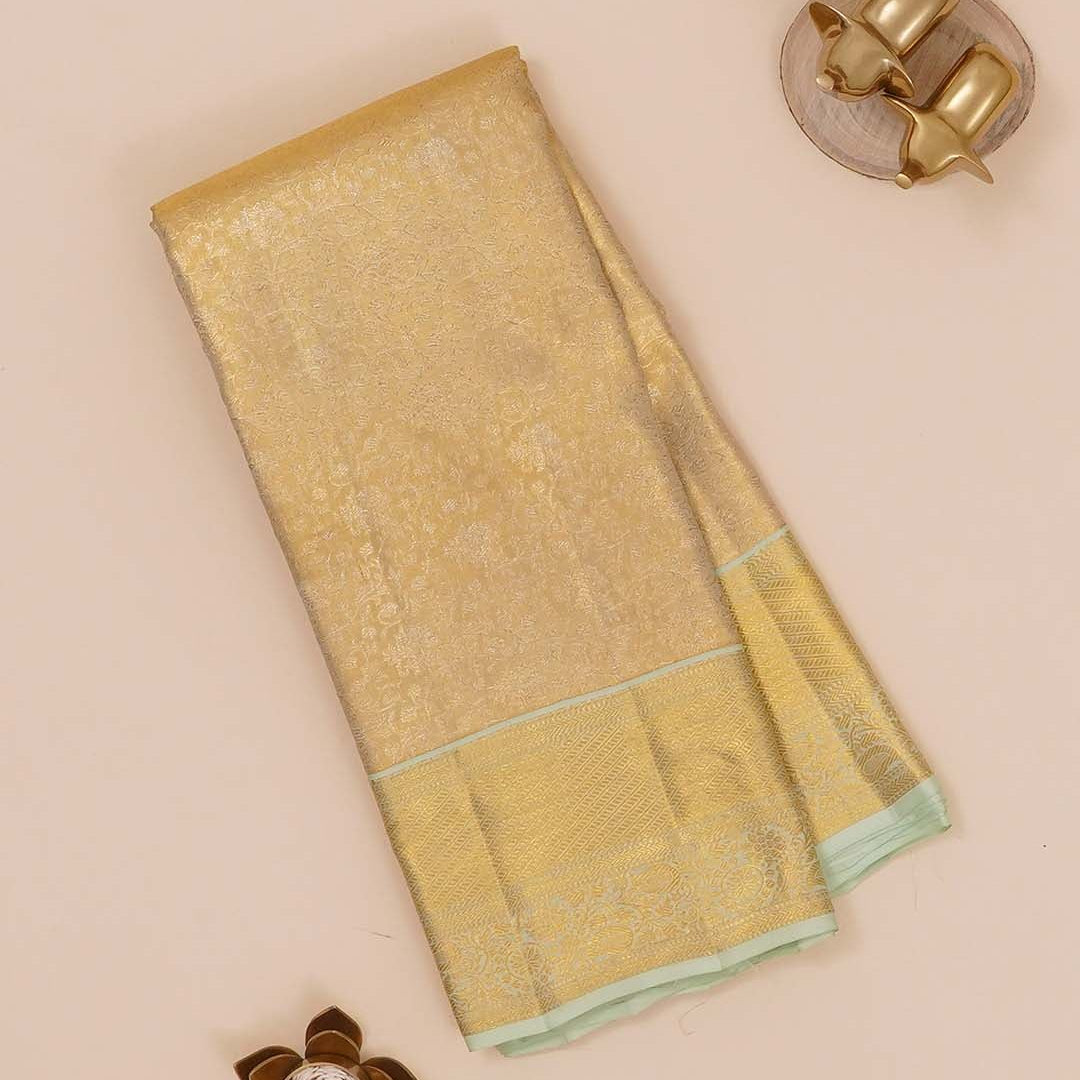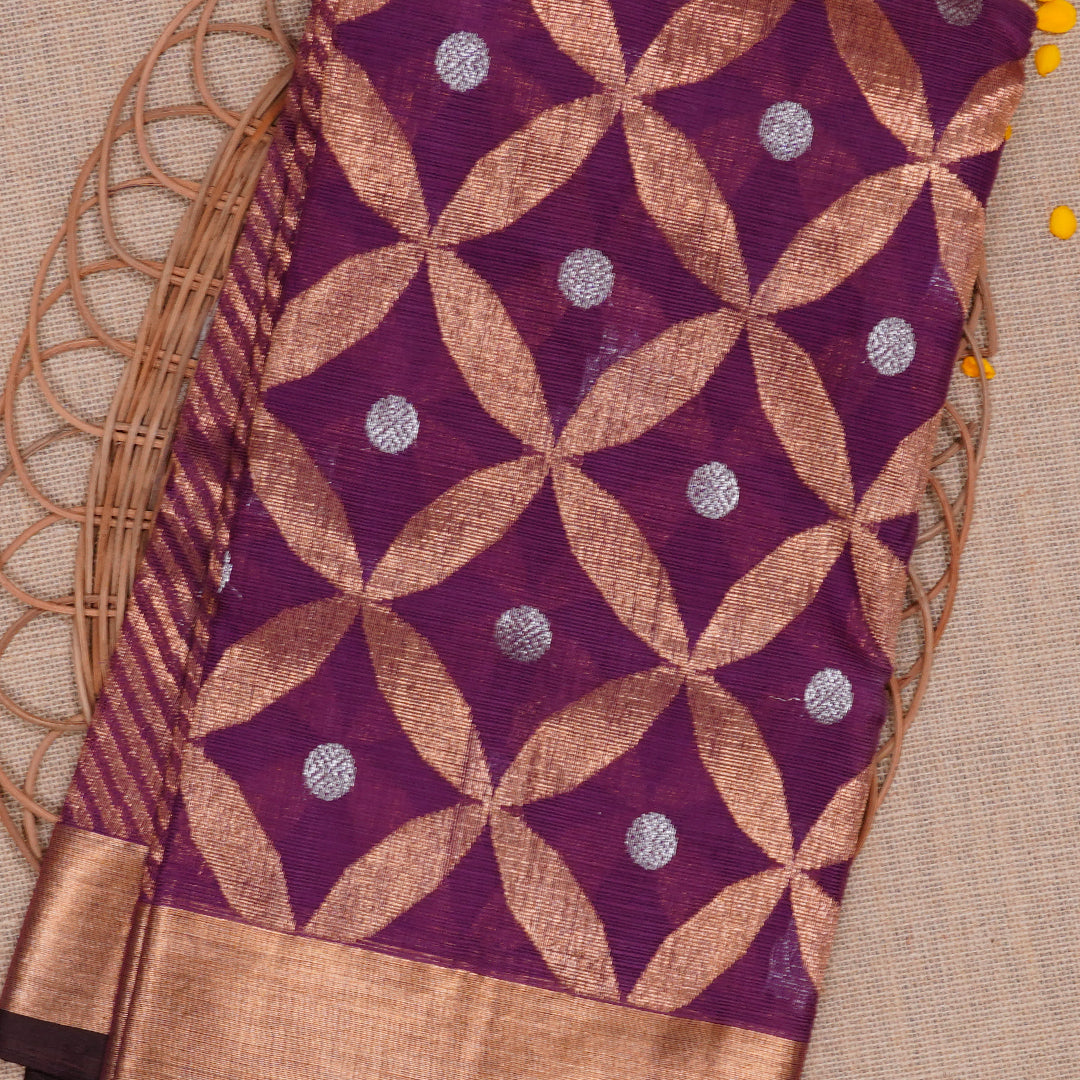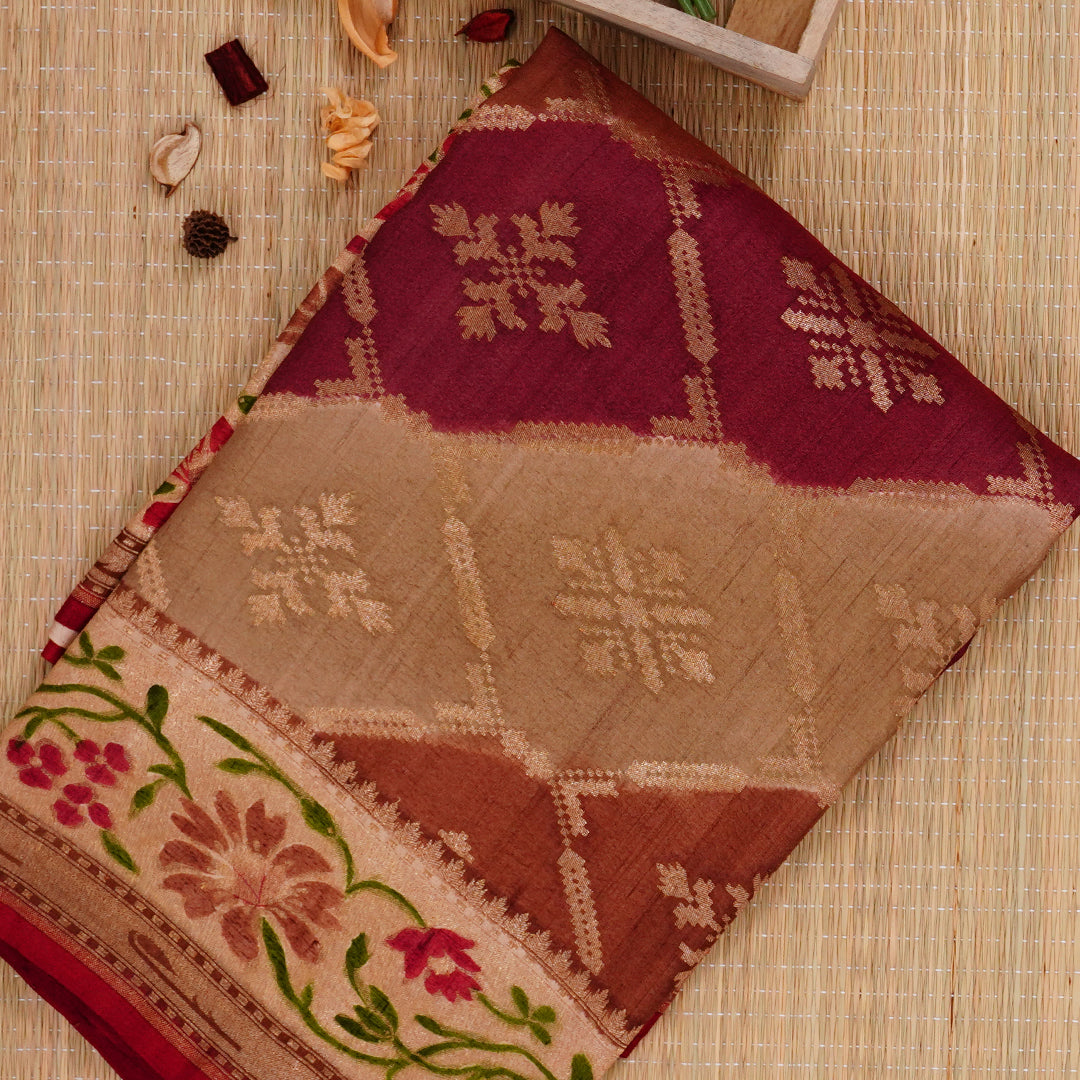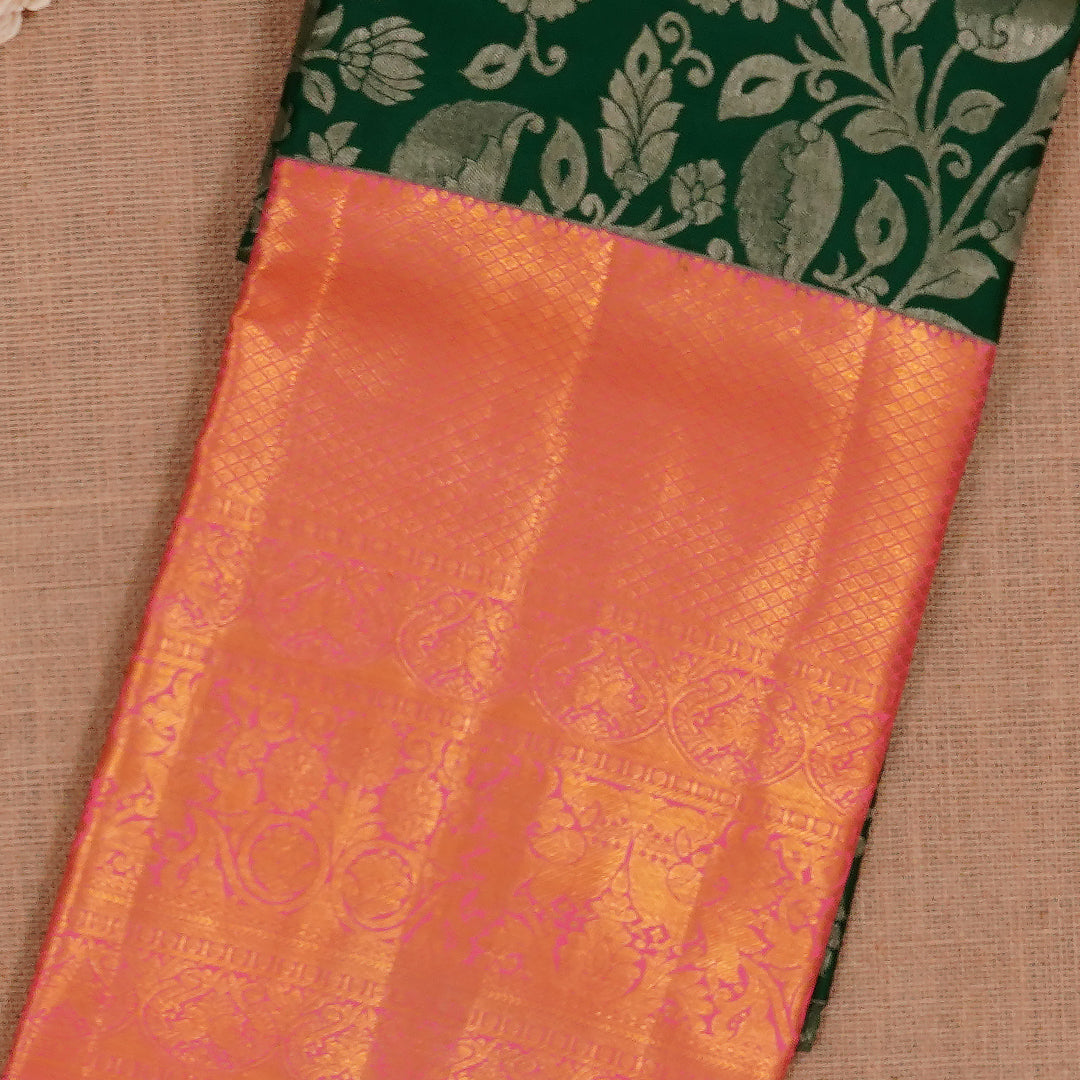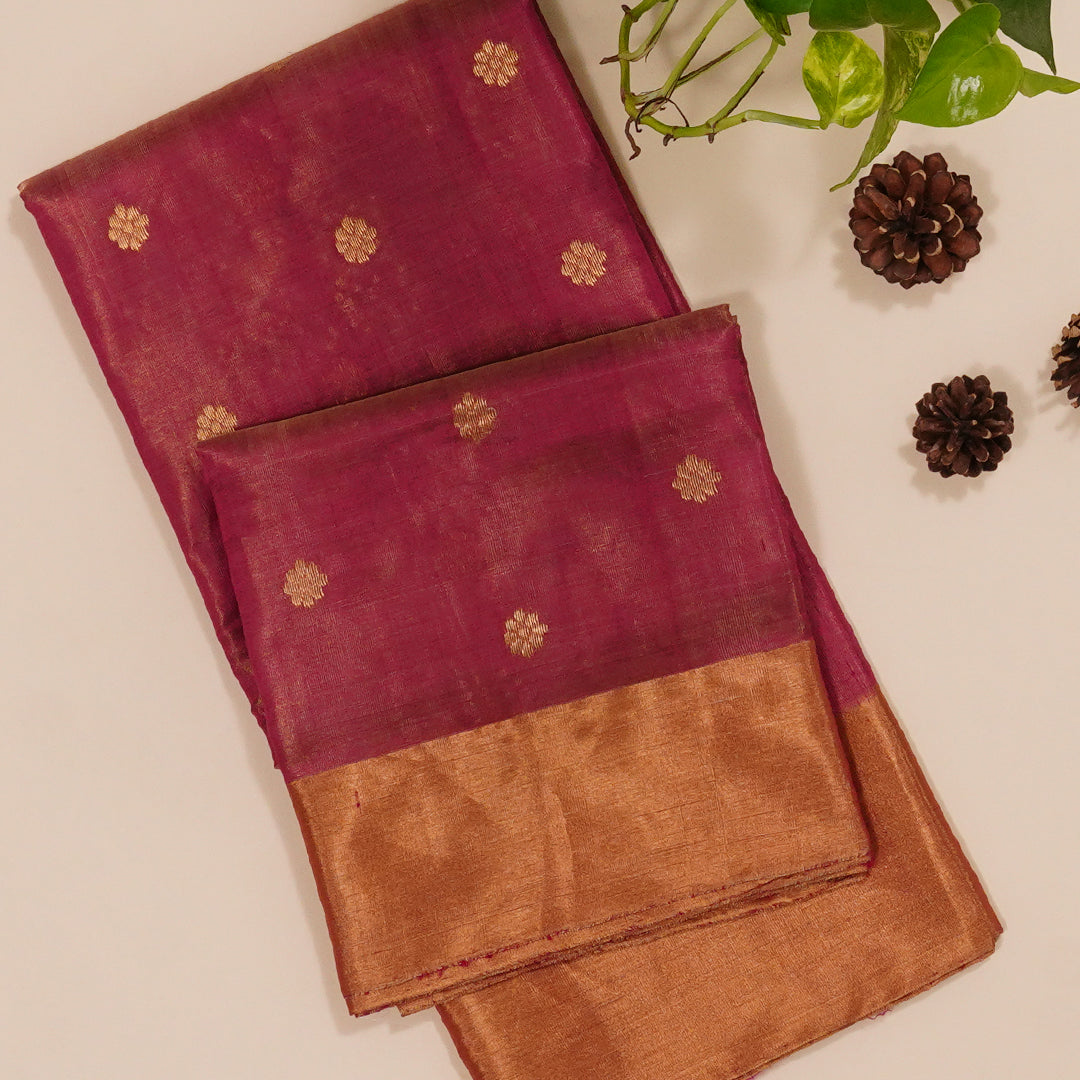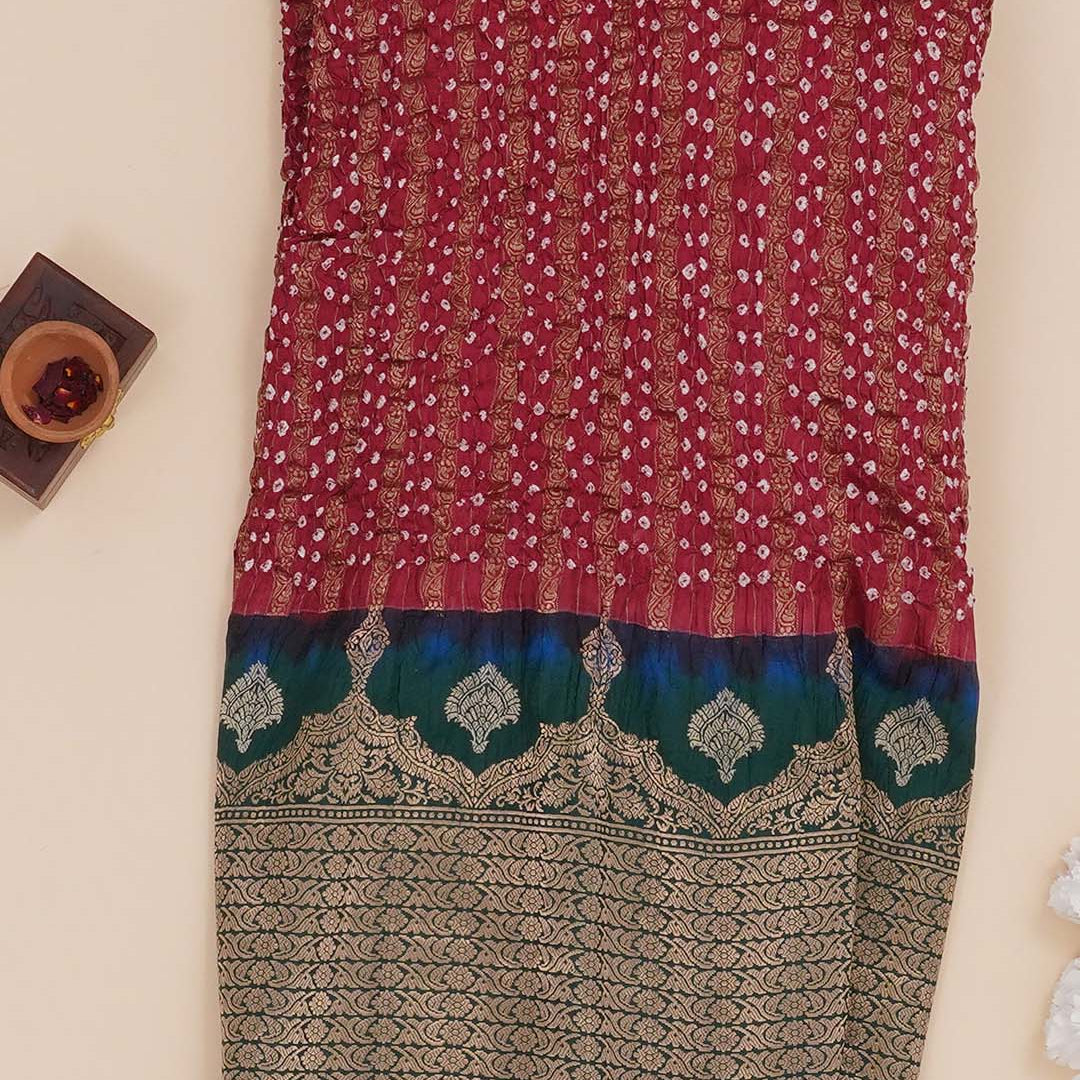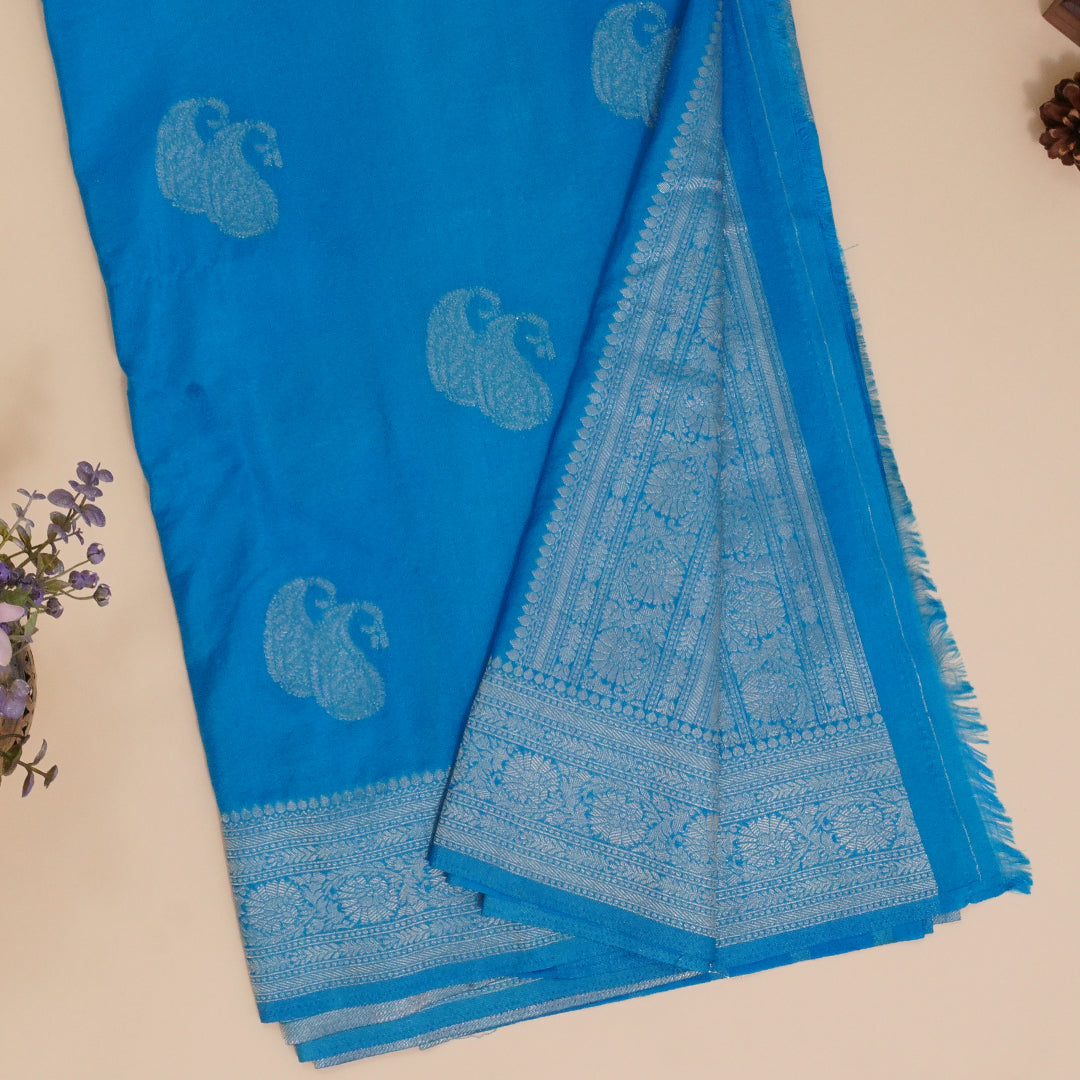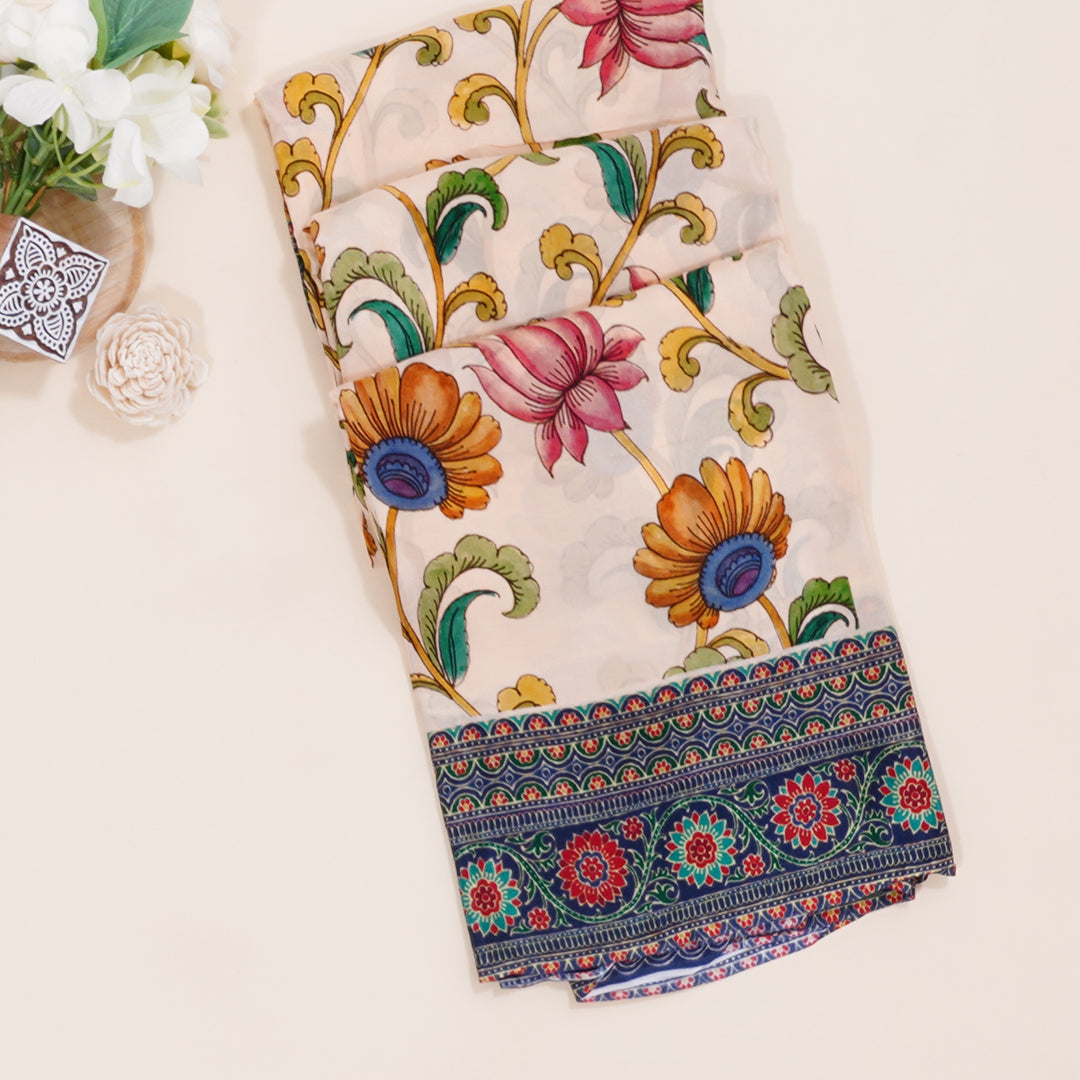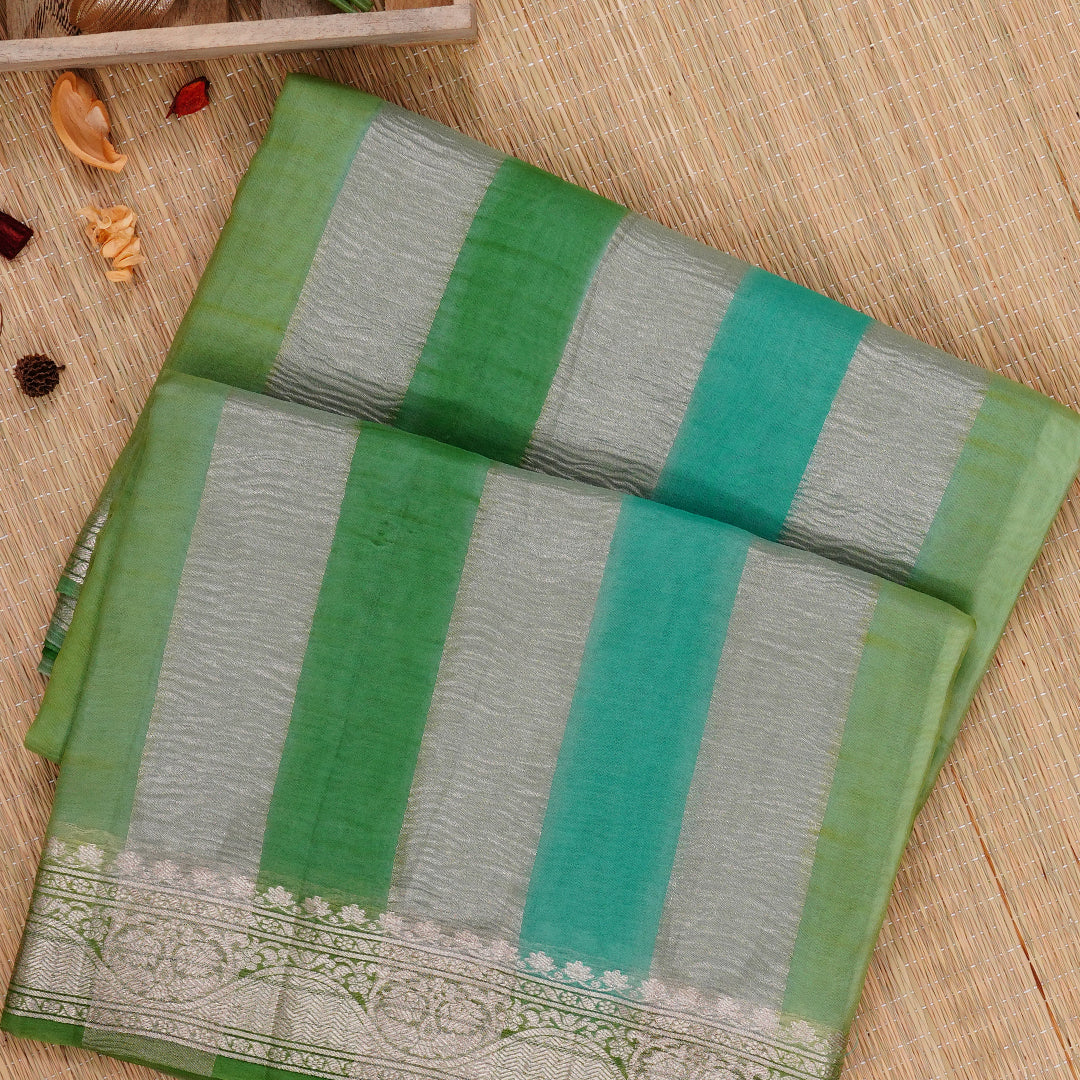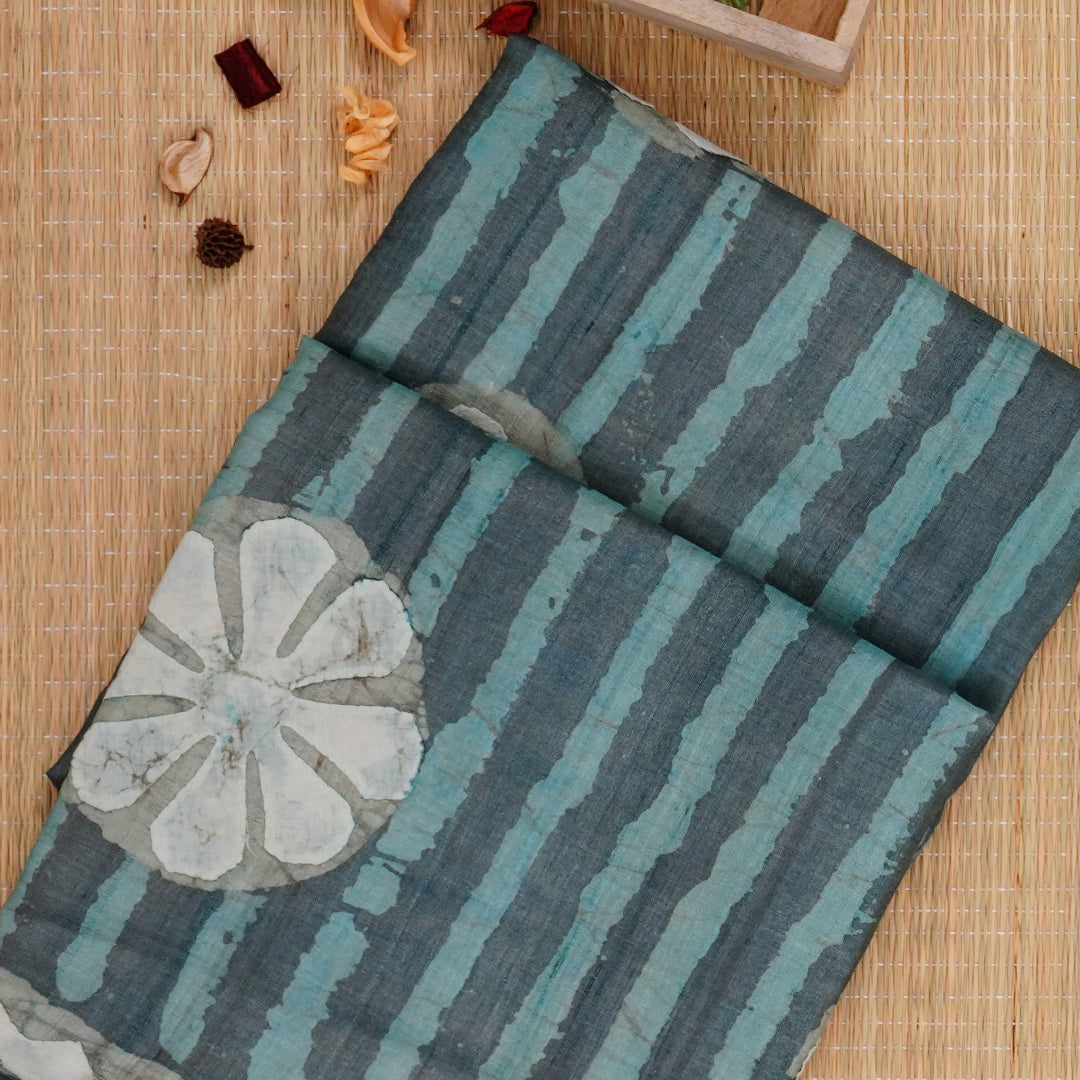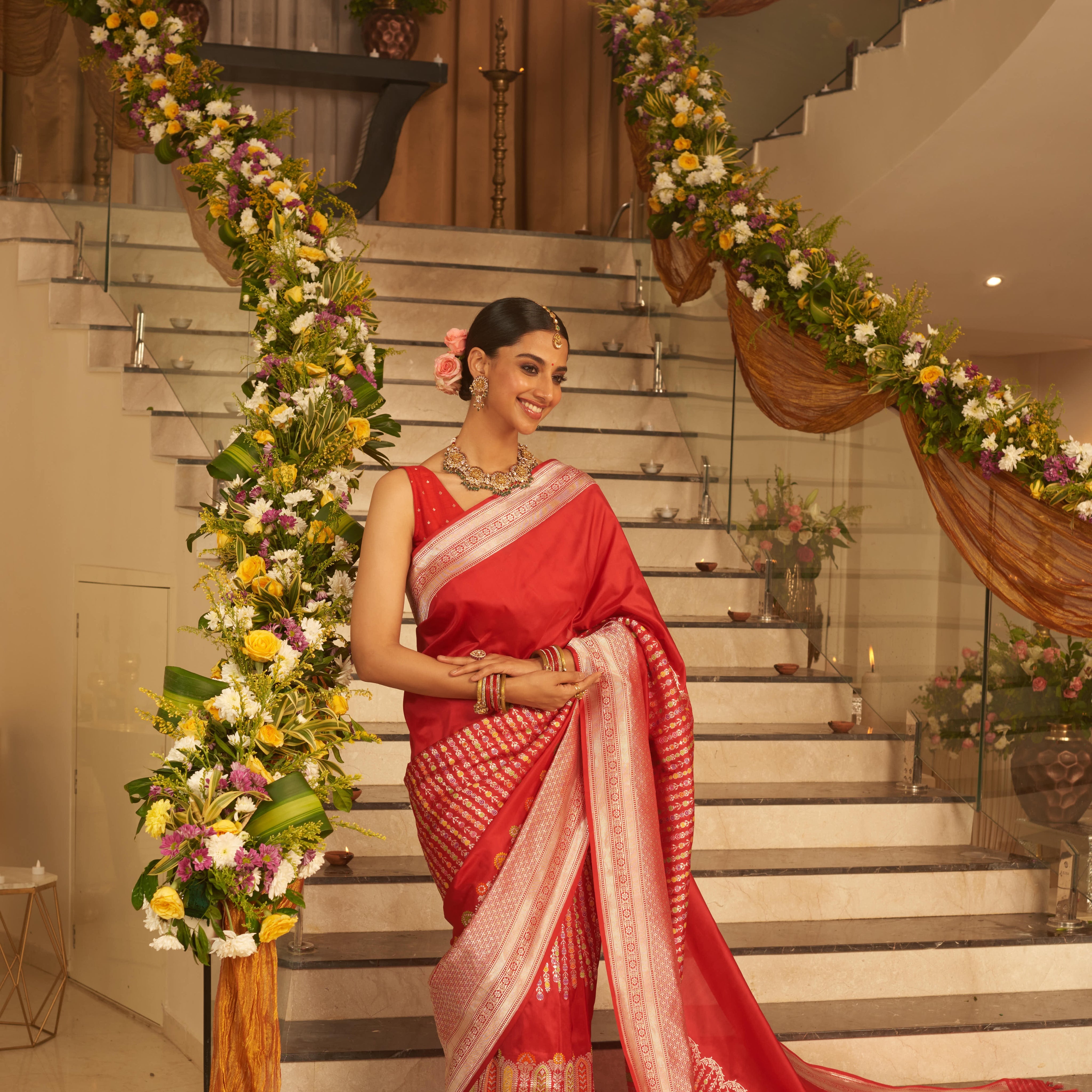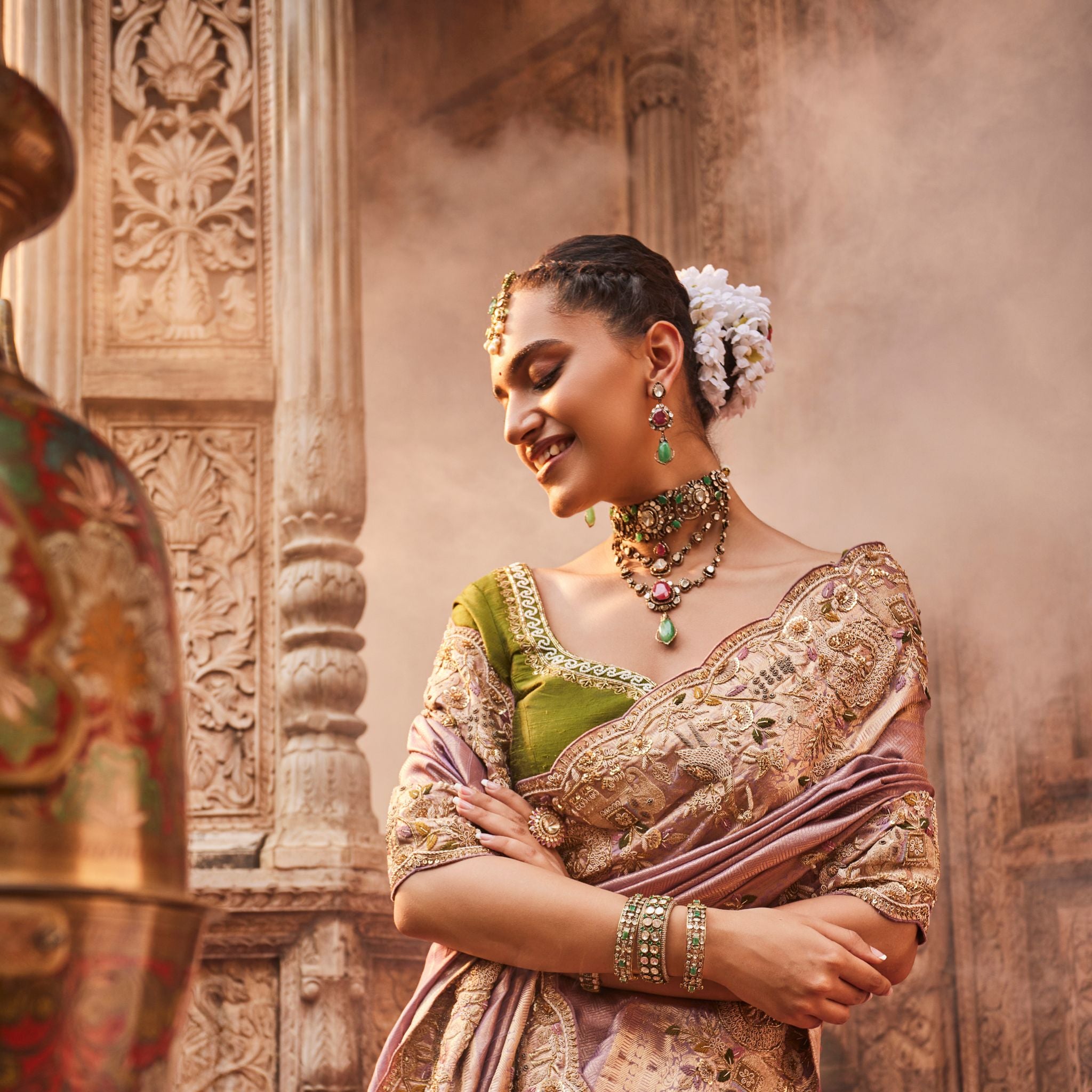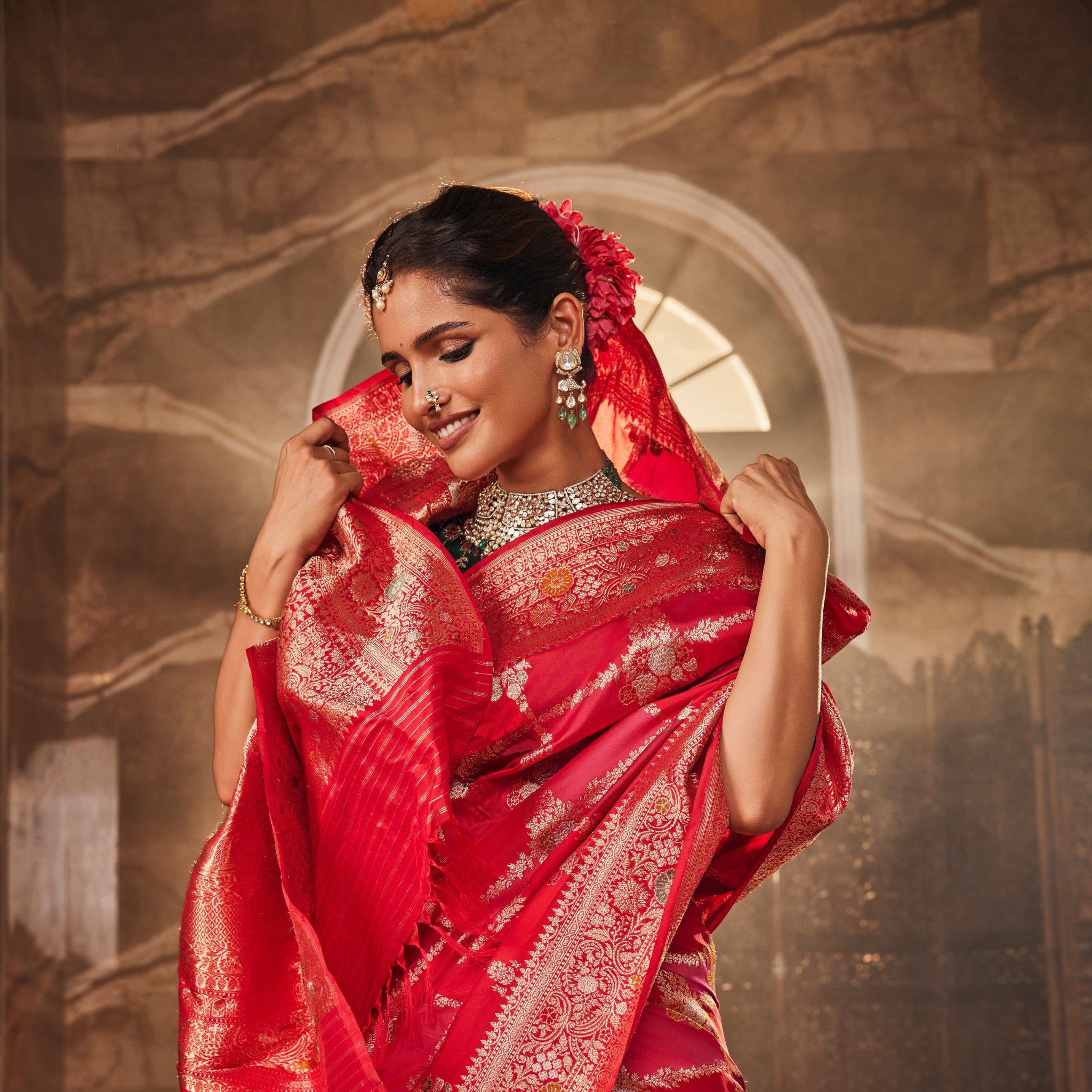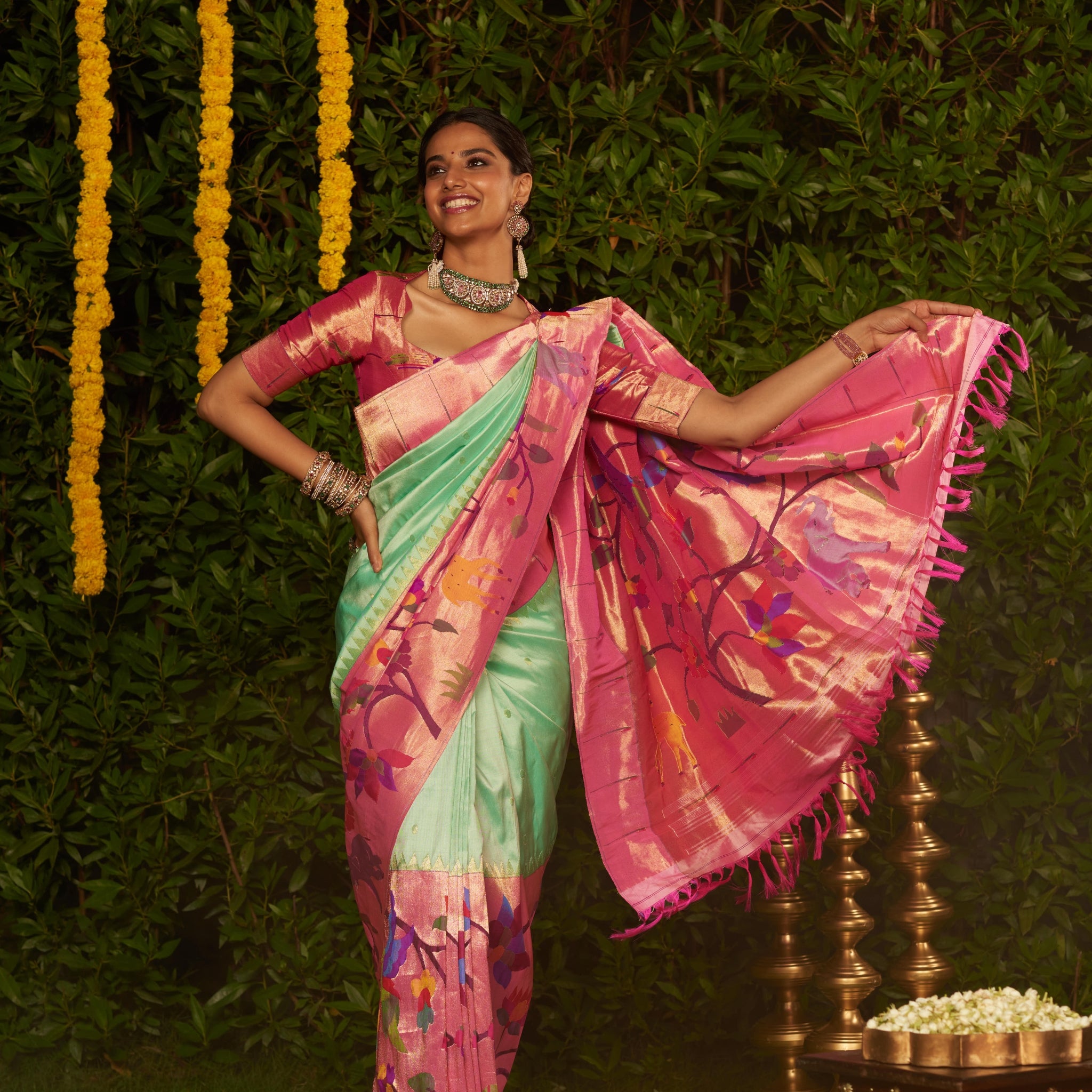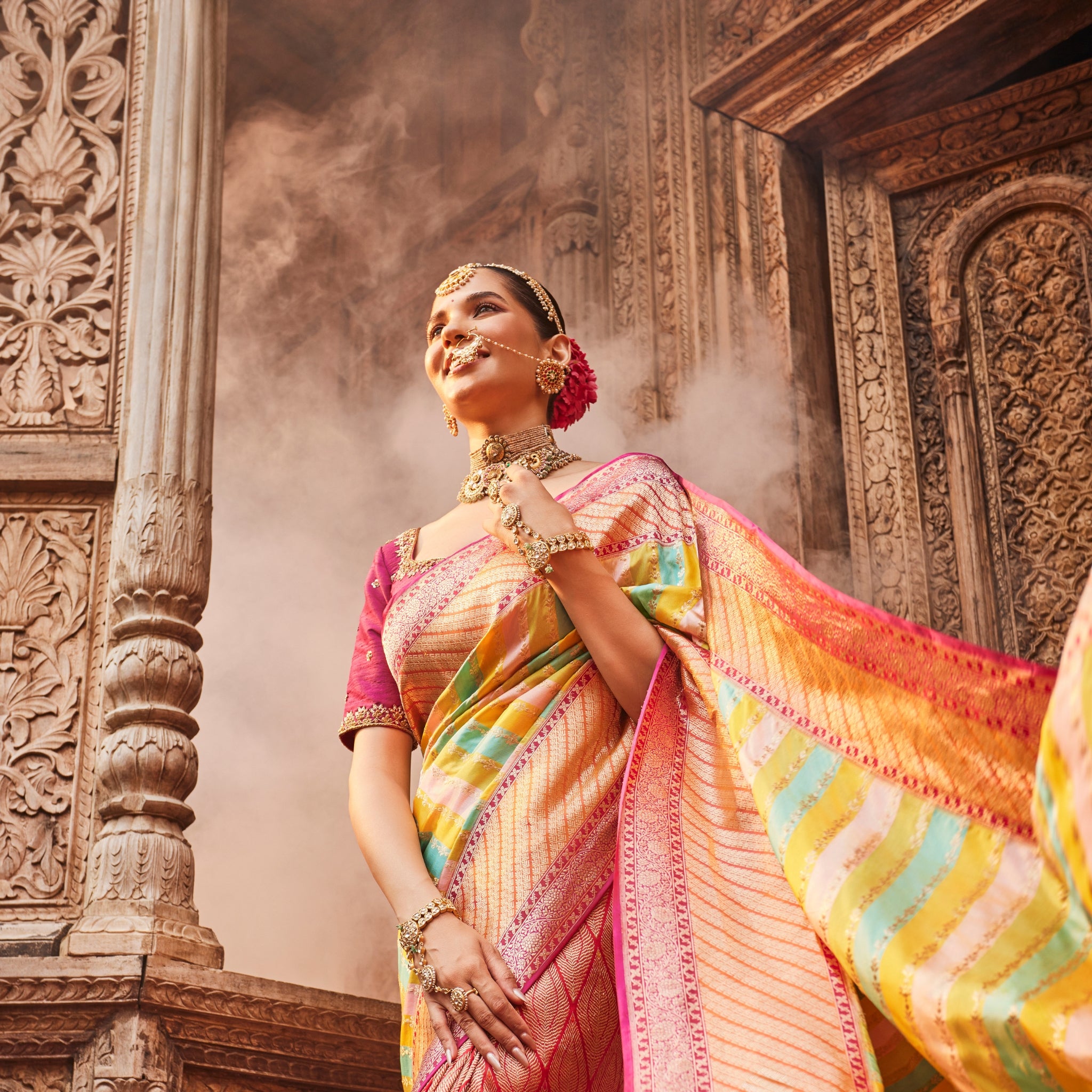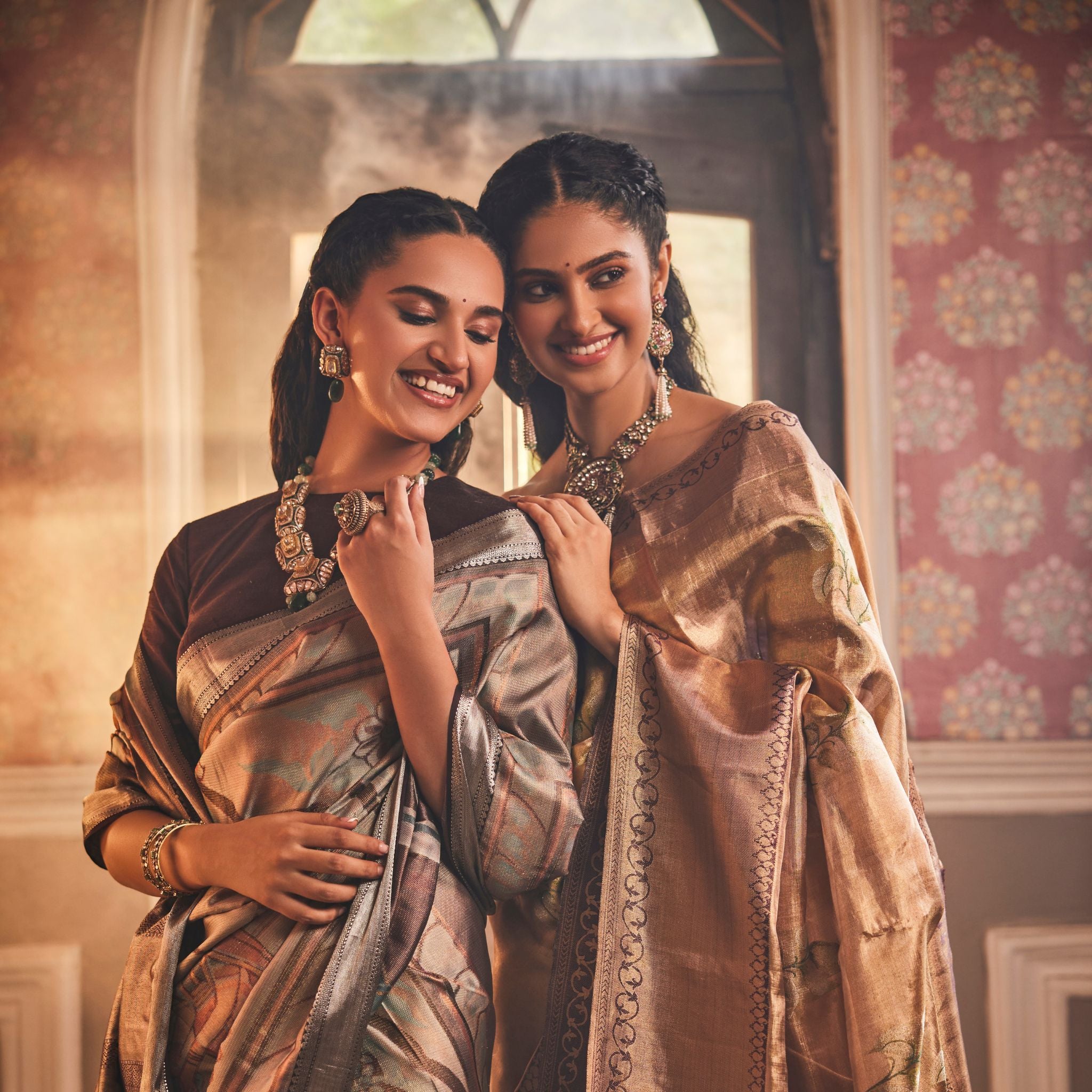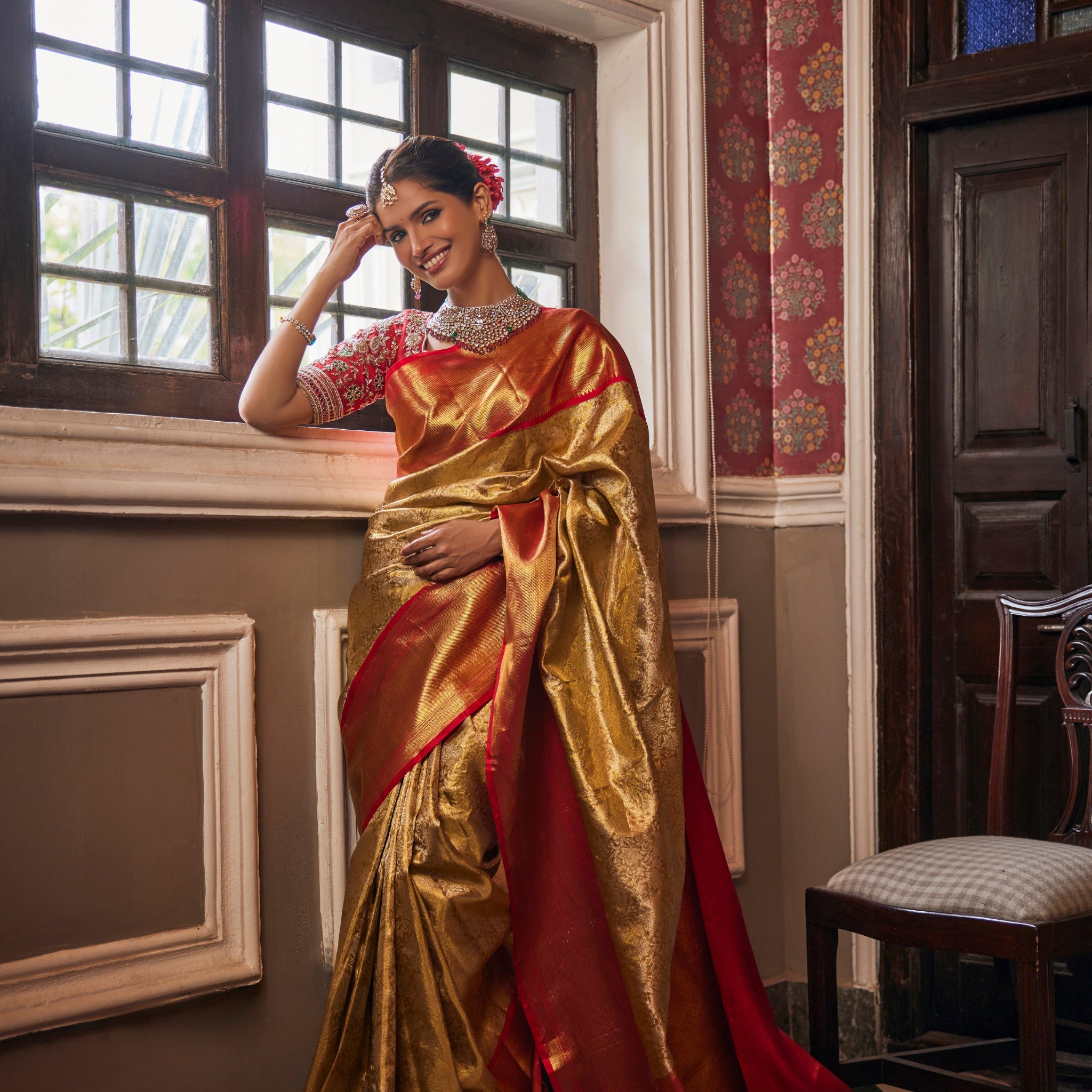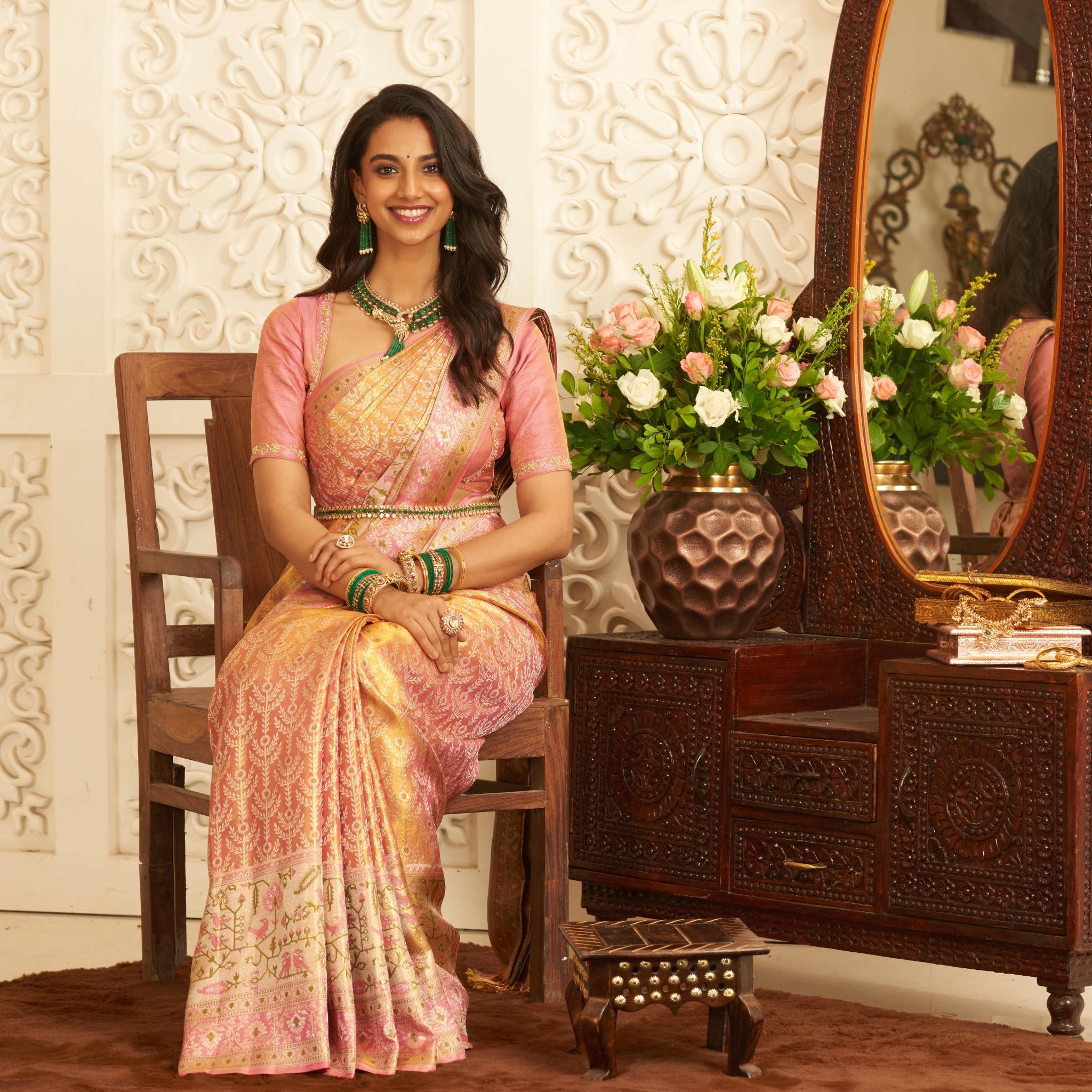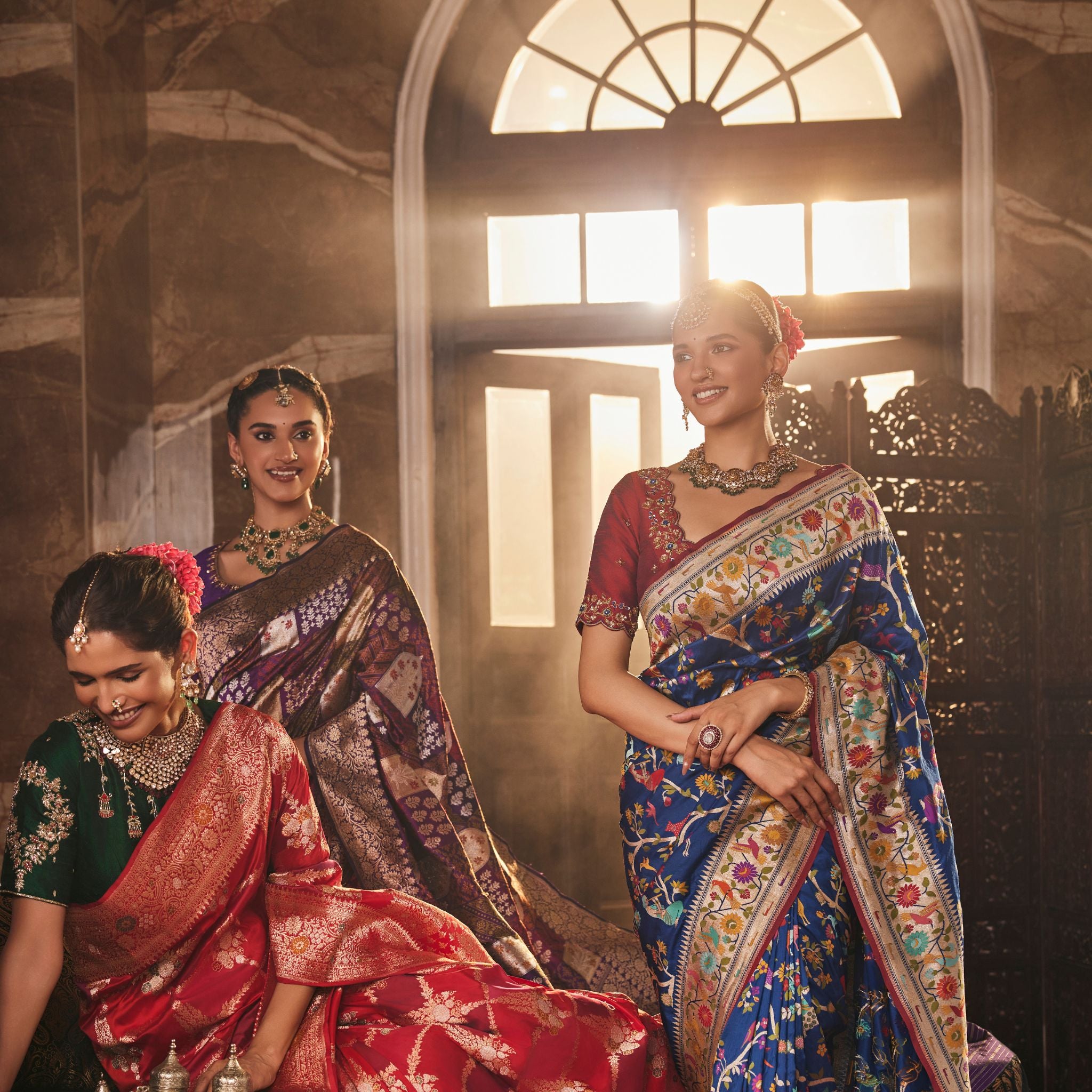From Kanjeevaram to Banarasi: The Best Bridal Sarees in India | Vaarahi Silks
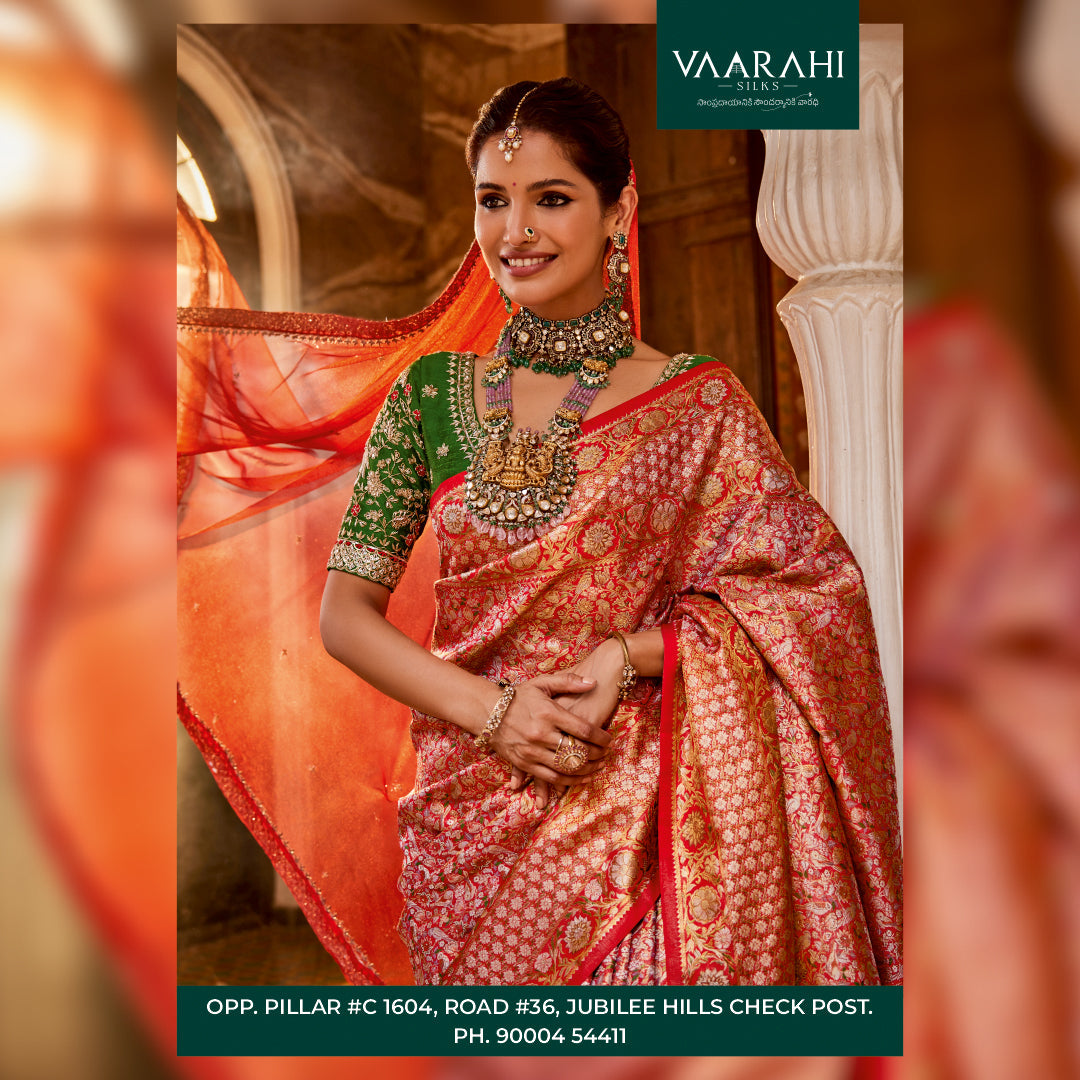
When it comes to Indian bridal fashion, few garments carry as much heritage, tradition, and aesthetic appeal as the bridal saree. Across regions, different weaving styles and fabrics define bridal elegance—from the silken opulence of Kanjeevaram to the luminous brocades of Banarasi. In this guide, we’ll take you through the top bridal saree traditions, what makes each unique, how to pick what fits you, and how to shop these designer sarees for wedding confidently online.
Why Bridal Sarees Are Still a Favorite
- Timelessness & Heirloom Quality: Bridal sarees are often treasured, passed down as family heirlooms.
- Cultural & Regional Identity: Different parts of India favor certain weaves (South India loves Kanjeevaram; North favors Banarasi) — choosing one ties you to tradition.
- Visual Impact: A bridal saree with rich silk, intricate borders, and zari makes a strong statement in photos and rituals alike.
- Versatility: Some brides reuse or restyle parts of the saree or blouse in future occasions.
Because of this, picking the right bridal saree is more than fashion—it’s about legacy, beauty, and personal statement.
Spotlight on Iconic Bridal Sarees
Here are some of the most revered bridal sarees in India, along with their hallmarks and best usage:
1. Kanjeevaram / Kanchipuram Silk Saree
Why it shines as a bridal favorite:
- Woven in Kanchipuram, Tamil Nadu, using mulberry silk and pure zari threads. It’s known for its strength, heavyweight drape, and lustrous finish.
- The fabric and motifs (temple borders, checks, floral jaals) hold up beautifully over hours of wear.
- Because of the weight and structure, it drapes in a regal, sculpted manner — ideal for bridal ceremonies.

What to look for:
- Bold temple motifs or contrasting borders
- Verified silk & zari (Silk Mark / GI)
- Heavier silk, good finishing, crisp borders
Best usage: The main wedding ceremony—particularly in South Indian weddings or brides wanting a deep, traditional drape.
2. Banarasi / Banaras Bridal Saree
Why it’s beloved across India:
- Originating from Varanasi, Banarasi sarees are woven with fine silk and intricate motifs (buttis, floral, zari jaals
- Compared to Kanjeevaram sarees, Banarasi sarees tend to be lighter in weight but rich in ornate brocade.
- There are multiple styles — Katan, Organza, Tissue, Meenakari, Jaal — offering flexibility between heavy and lighter bridal choices.

What to look for:
- Rich zari brocade work
- Consistent motifs and symmetry
- Silk quality and finishing
Best usage: Evening receptions, modern/traditional blend weddings. If you want a dramatic yet wearable bridal saree, Banarasi is a top choice.
3. Other Noteworthy Bridal Weaves
While Kanjeevaram and Banarasi are staples, several other regional bridal sarees deserve attention:
- Uppada Jamdani — lightweight silk with beautiful floral motifs, ideal when you want elegance without weight.
- Bomkai Silk — from Odisha, with interesting motifs and traditional weaving
- Koorai / Koorai Pattu — a 9-yard Tamil bridal weave (often used in Madisar drape) blending silk & cotton, with unique checks and motifs. These can be excellent alternatives if you prefer lighter drapes or want a regional flavor for parts of your wedding.

How to Choose the Best Bridal Saree for You
Here are key factors to consider when choosing a bridal saree:
1. Event & Timing
- For daytime temple ceremonies, heavier silk (like Kanjeevaram) holds up under daylight.
- For evening receptions, Banarasi with sparkle or metallic threads is stunning.
- If you need to move, dance, or travel, lighter options like Uppada or lighter Banarasi variants may be more comfortable.

2. Body Type & Drape Preferences
- If you’re shorter or modest build, avoid overly broad or heavy borders.
- If you want volume and structure, heavier silk works well.
- Choose a drape style (traditional, belt-drape, fusion) that flatters your figure.

3. Comfort & Wearability
- Avoid going too heavy if your wedding involves many hours of movement.
- Ensure the blouse is well-fitted and allows arm movement.
- Test the saree before D-day—do a full drape rehearsal.

4. Budget & Craftsmanship
- True bridal silks with elaborate zari and handloom work command a premium.
- Verify authenticity (Silk Mark, GI tag, trusted seller) before paying.
- Sometimes investing slightly more in quality gives you an heirloom that lasts decades.

5. Fusion & Styling Potential
- You may want a saree that you can restyle later (remove heavy borders, pair with modern blouses).
- Try to pick colors or motifs that let you reuse parts (blouse, pallu) later.

Styling & Accessorizing Your Bridal Saree
- Let your saree be the centerpiece — balance with jewelry (temple jewelry, traditional gold, pearls).
- Blouse design: depending on the saree, sometimes solid or lightly embroidered works better.
- Drape neatly so motifs and borders are visible.
- Footwear: select heels or wedges you can walk/stand in.
- Backup essentials: safety pins, extra blouse stitching, satin inner.
Vaarahi Silk STORE LOCATIONS :
📍Vaarahi Silks Jubilee Hills
Vaarahi Silks, Road No. 36, opp
Metro Pillar # C1604, Jubilee Hills, Hyderabad,
Telangana 500033
Map: https://share.google/GyvPzx53nUu2YaJtR
📍 Vaarahi Silks KPHB
Vaarahi Silks, Rd Number 1, opp. Metro Pillar A756,
near KPHB Colony, K P H B Phase 1, Kukatpally,
Hyderabad, Telangana 500072
Map: https://share.google/kUaaQxoMGXv2P42Gj
📍 Vaarahi Silks patny center, Secunderabad
Vaarahi Silks, 1-1-100, Rashtrapati Rd, opposite HPO,
Kummari Guda, Kalasiguda, Secunderabad,
Telangana 500003
Map: https://share.google/ytqY5Fu0Ljbj6x8NJ
📍 Vaarahi Silks Nellore
B. V. Nagar, Mini Bypass Road, Nellore, Andhra Pradesh 524003
Map:https://share.google/H2Rak38iuC9bPd9Me




